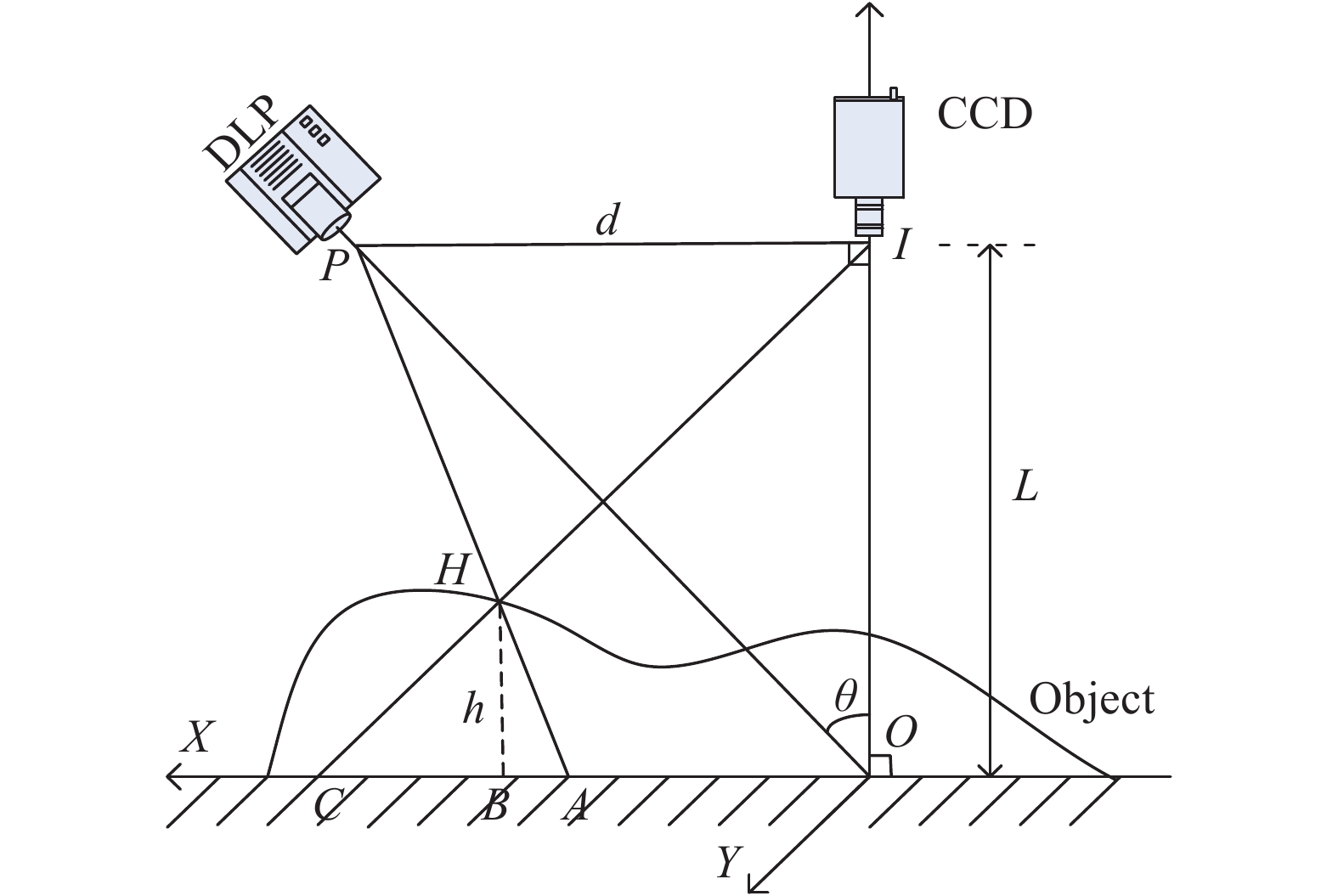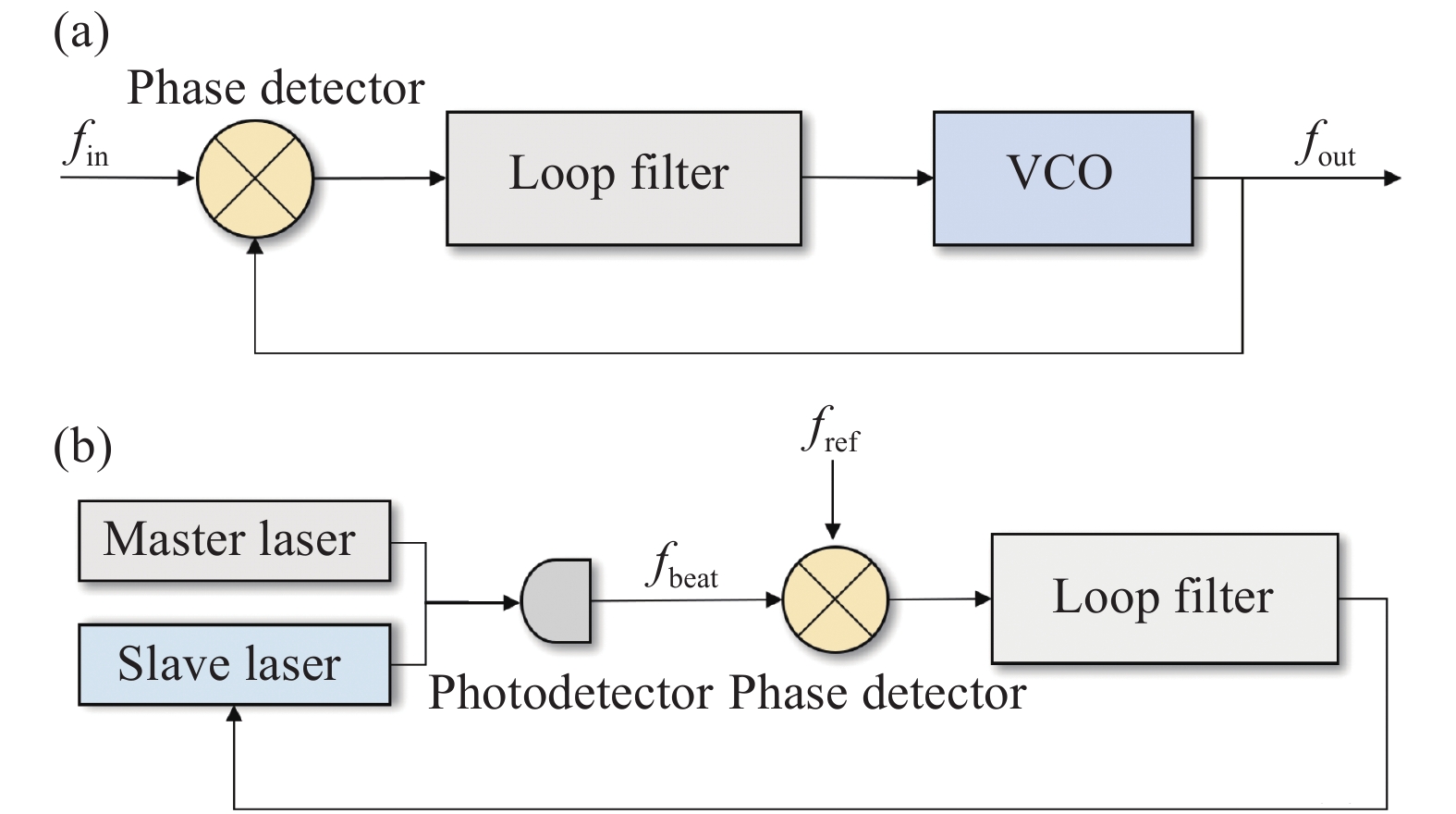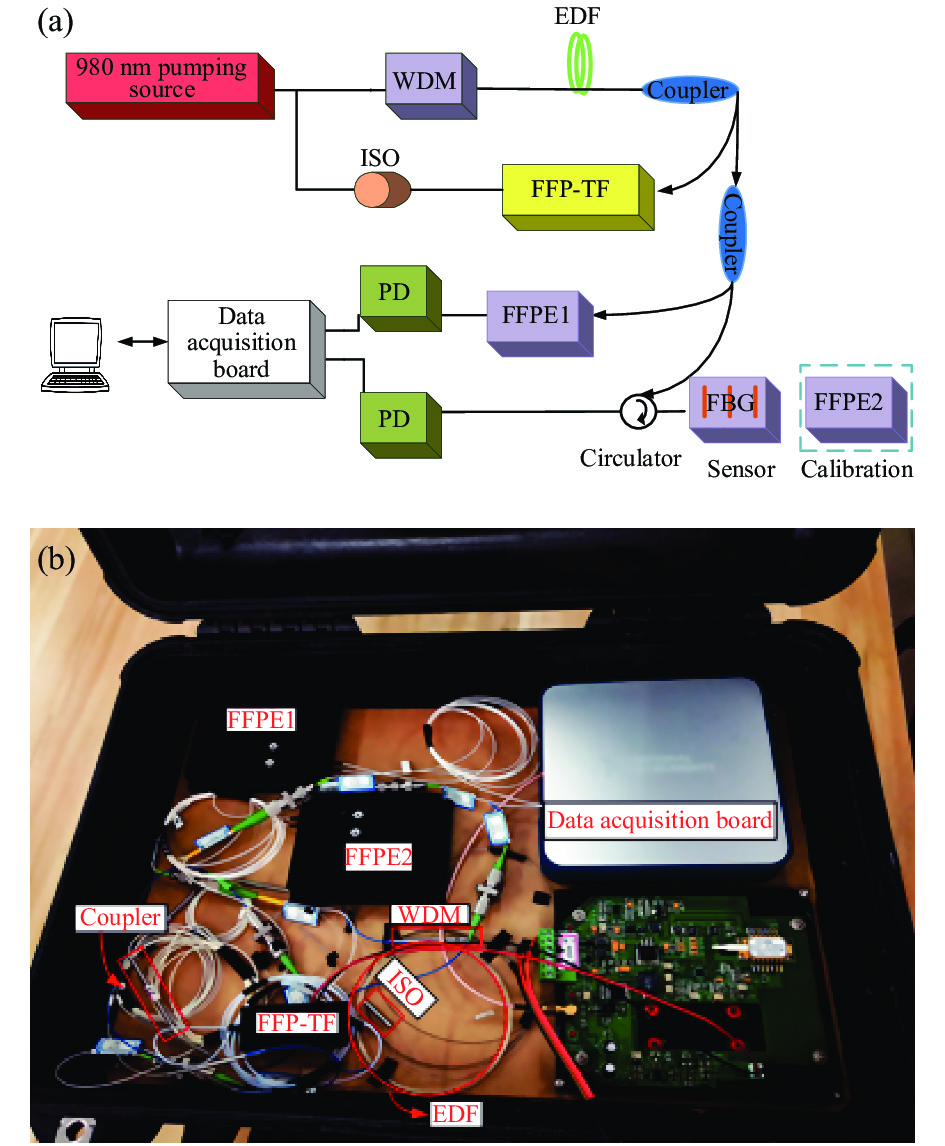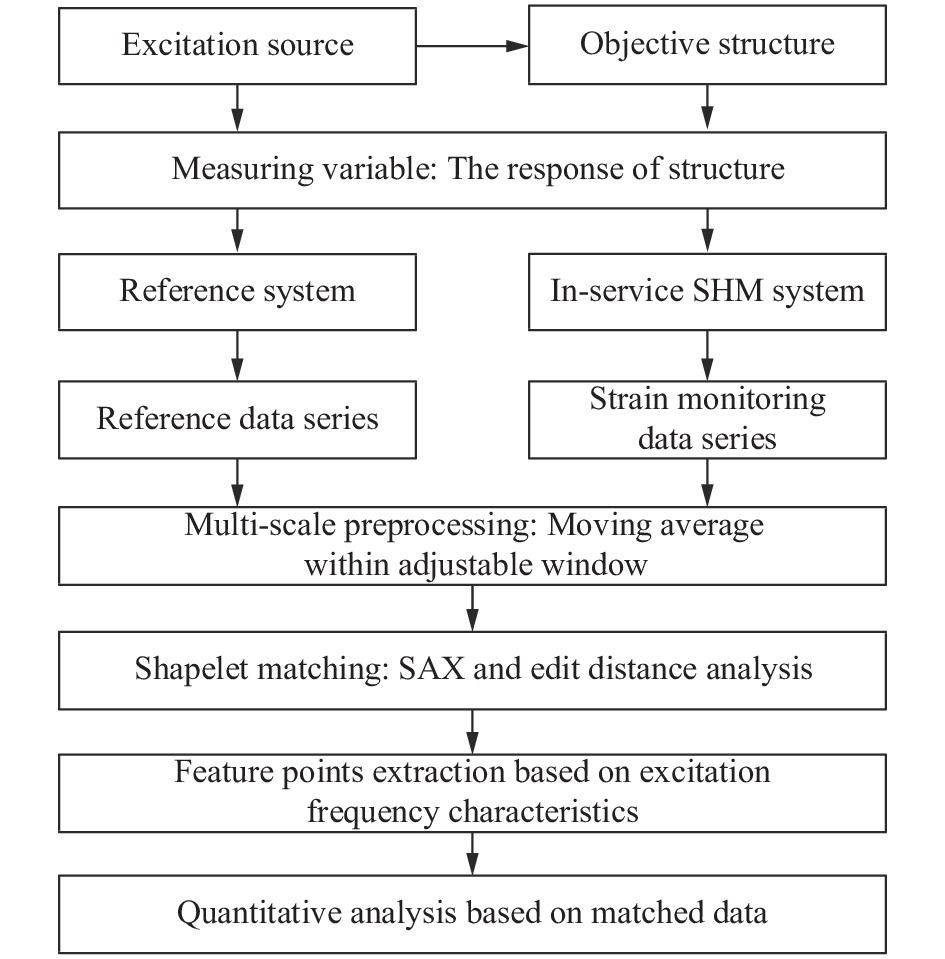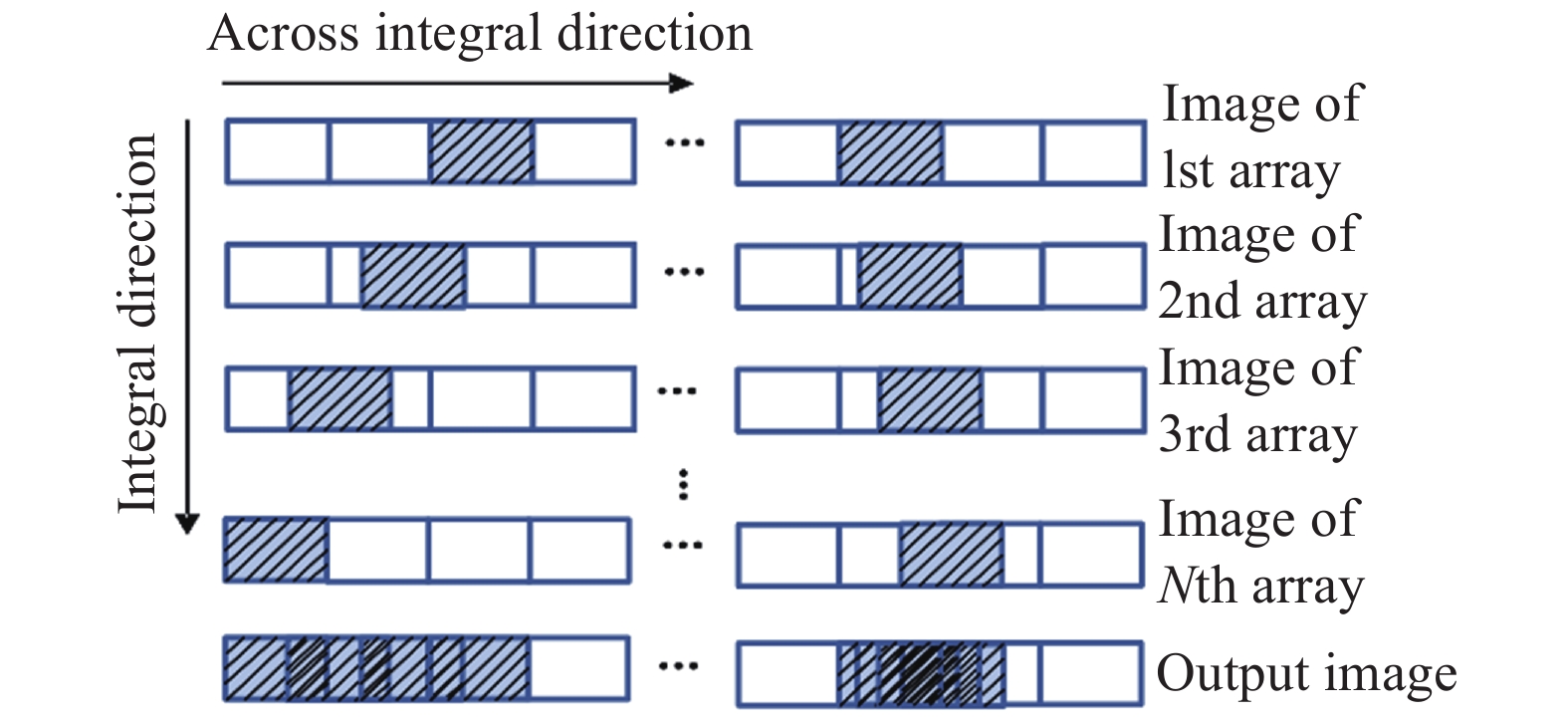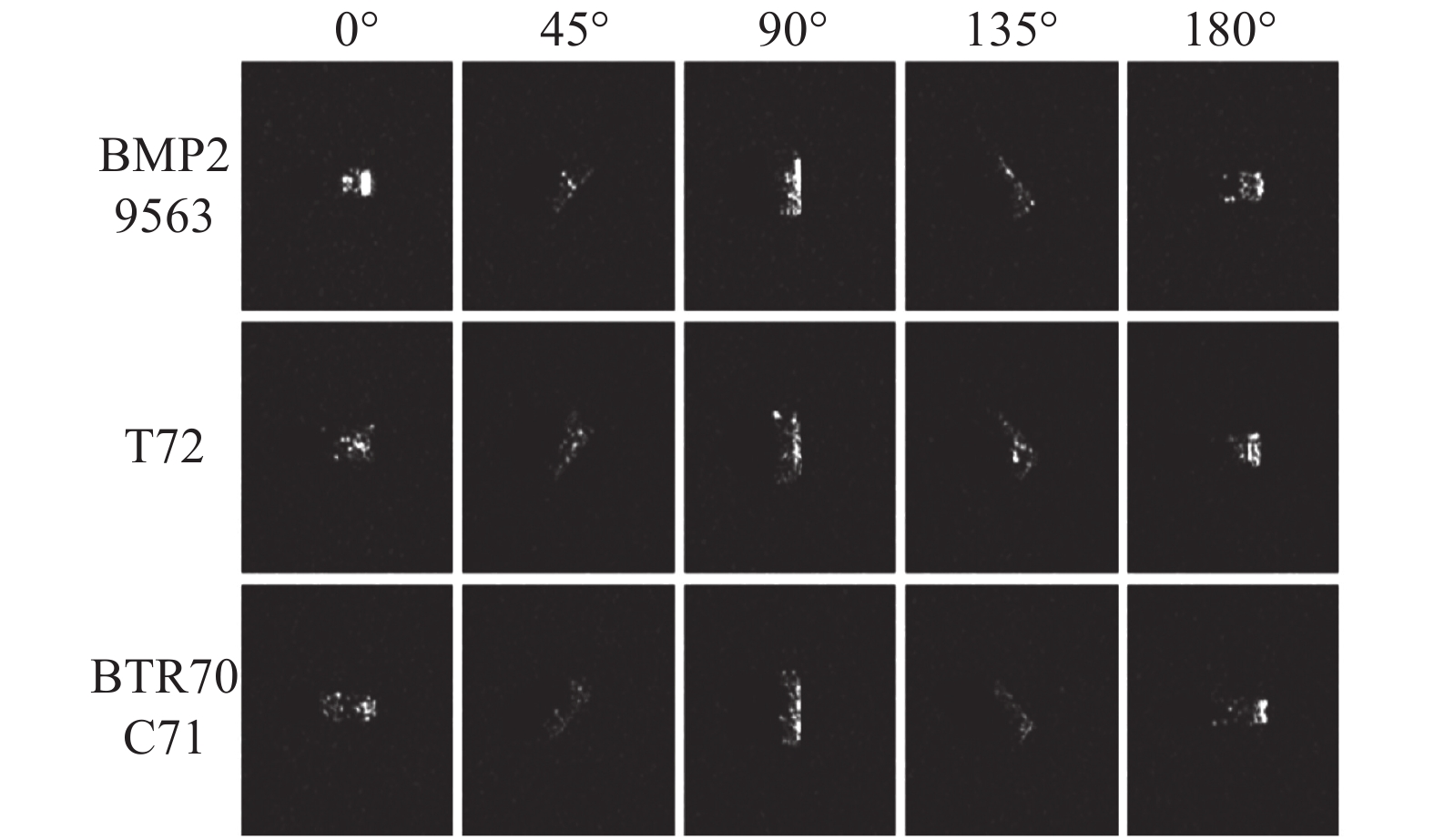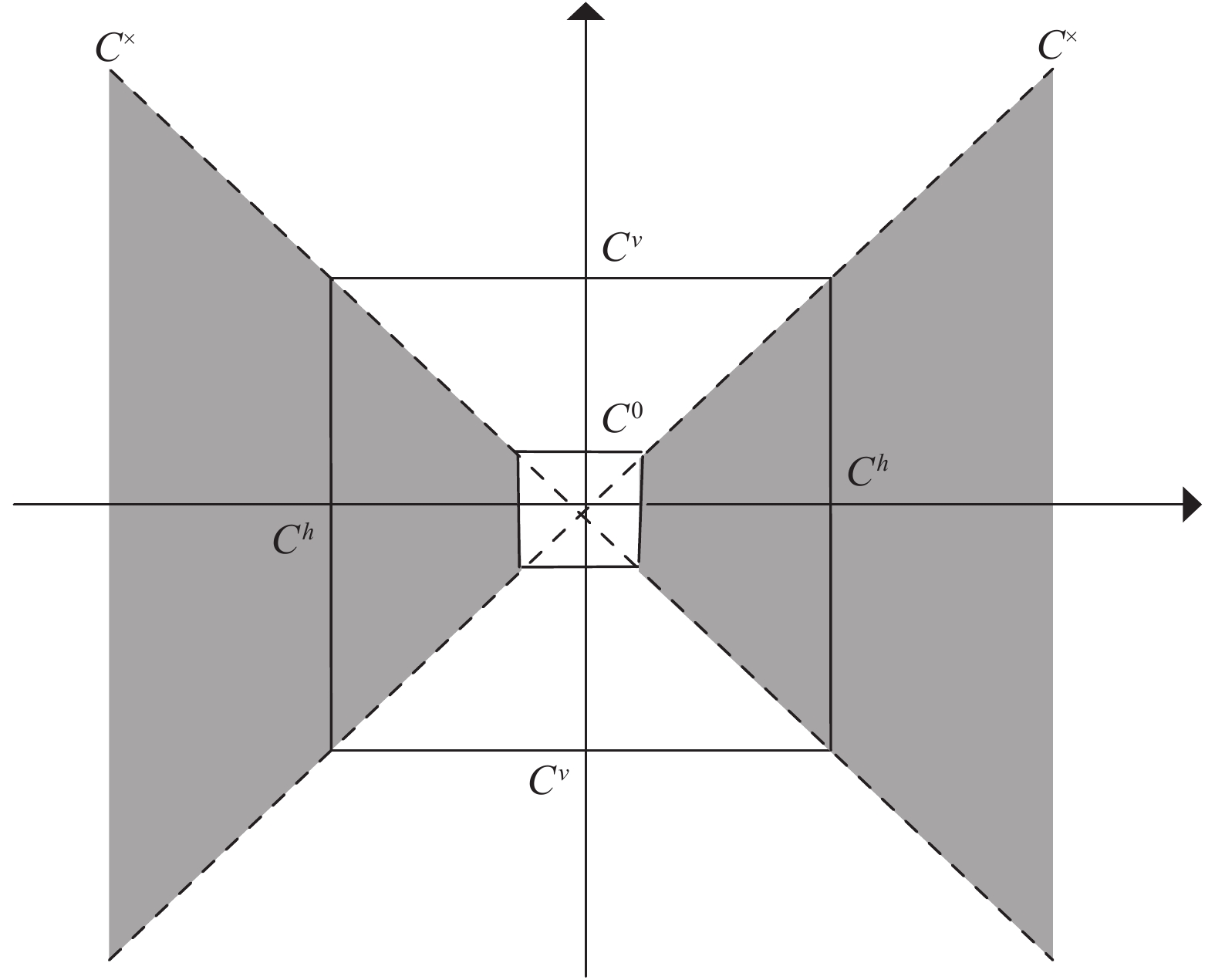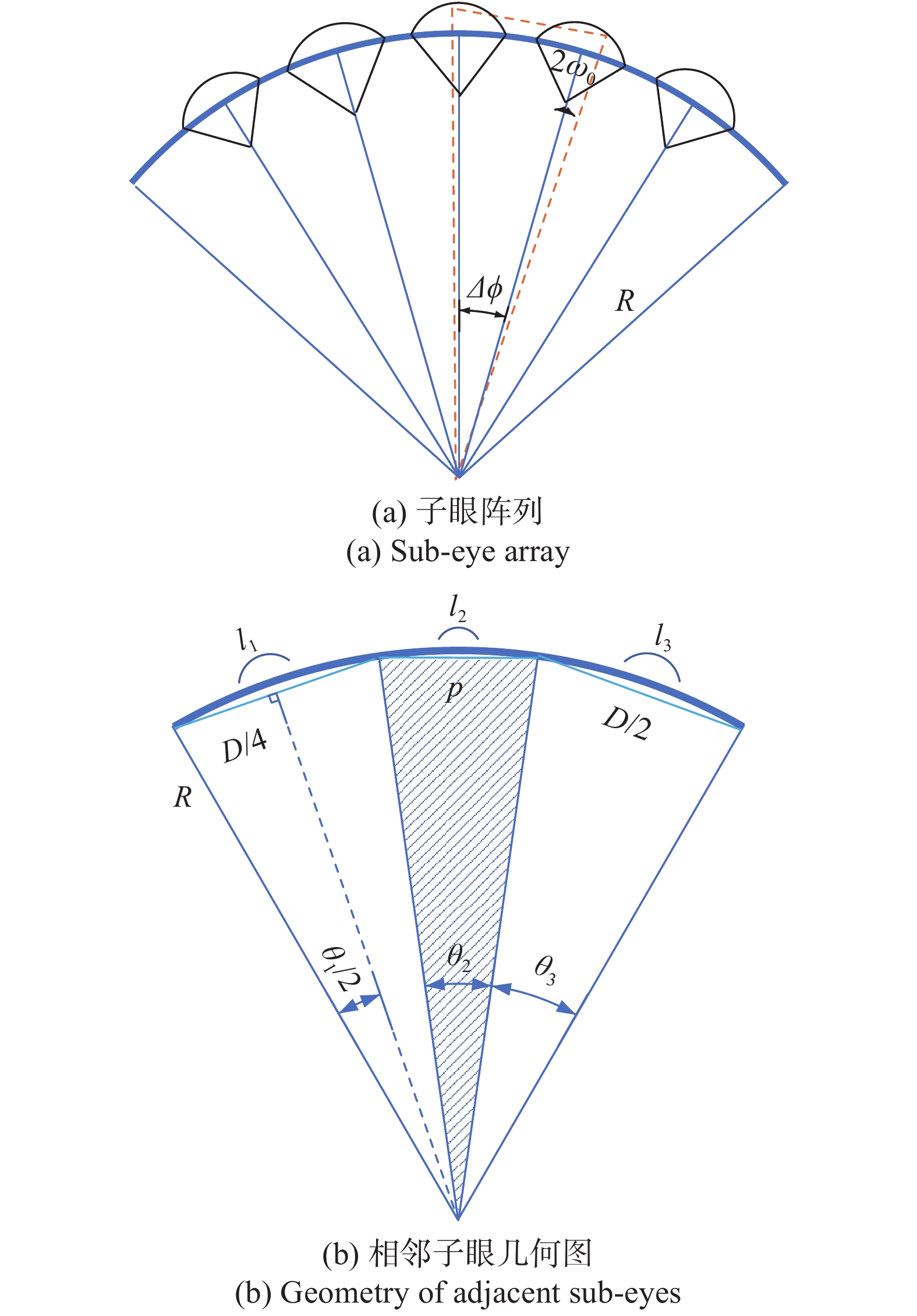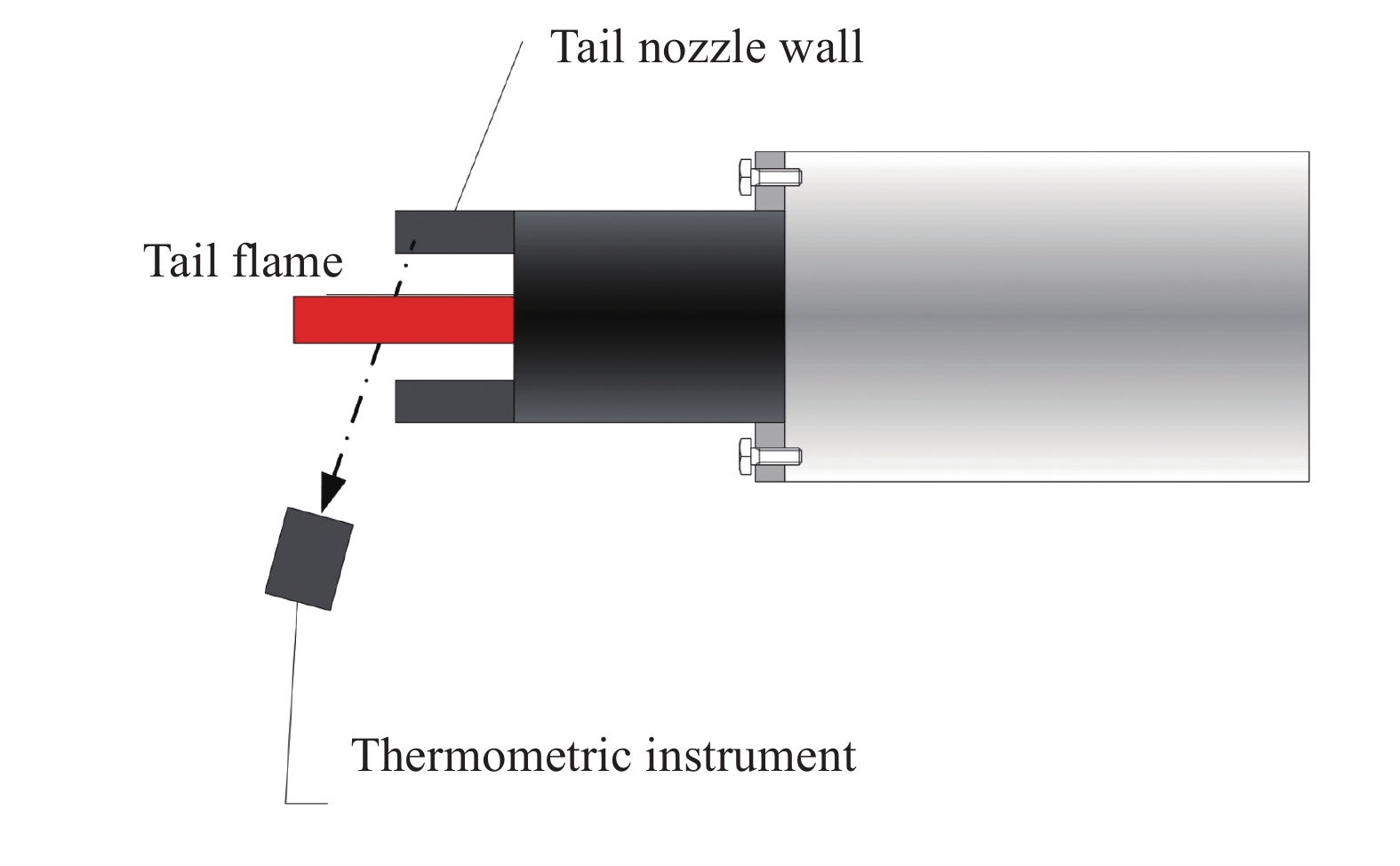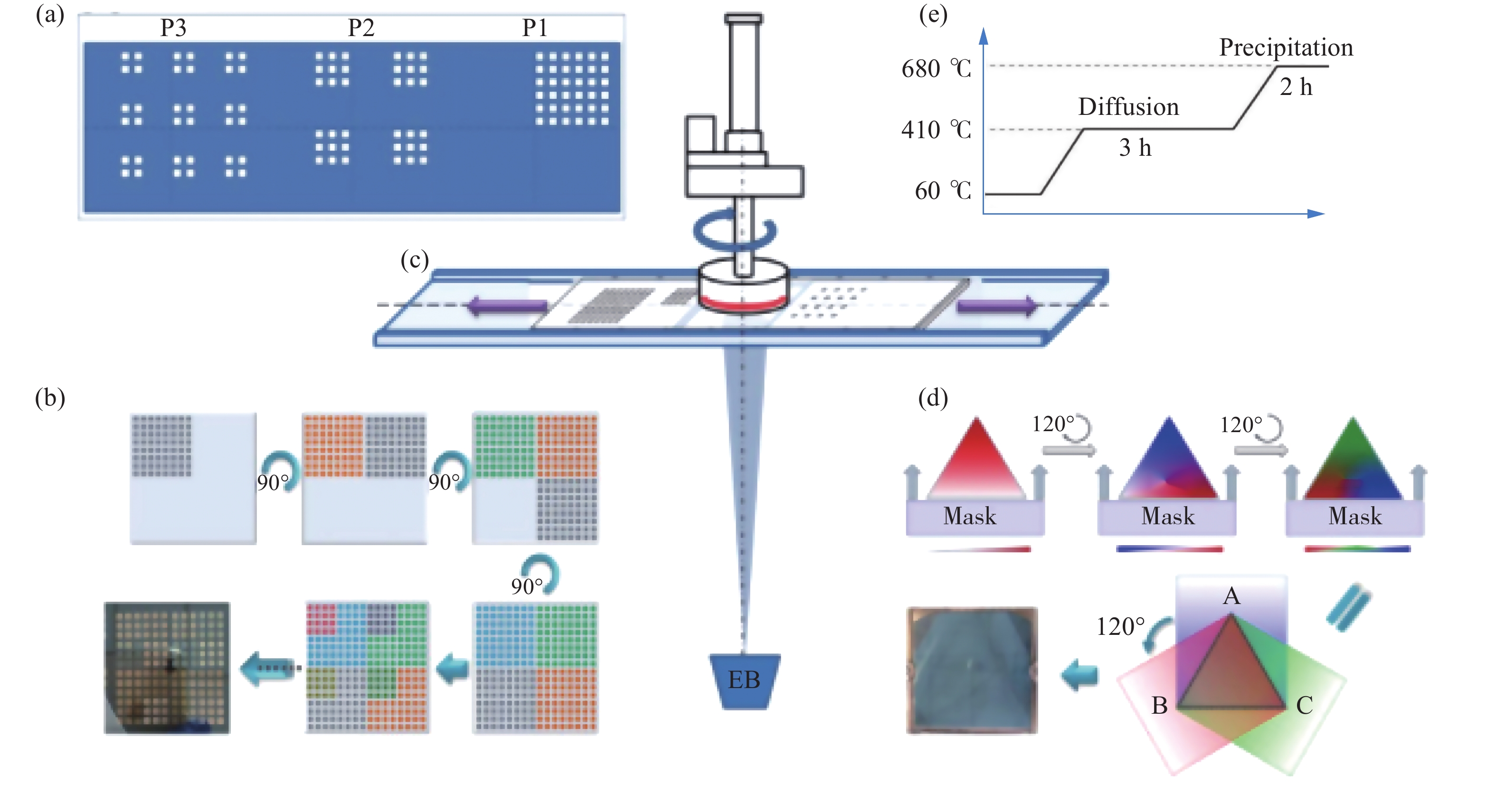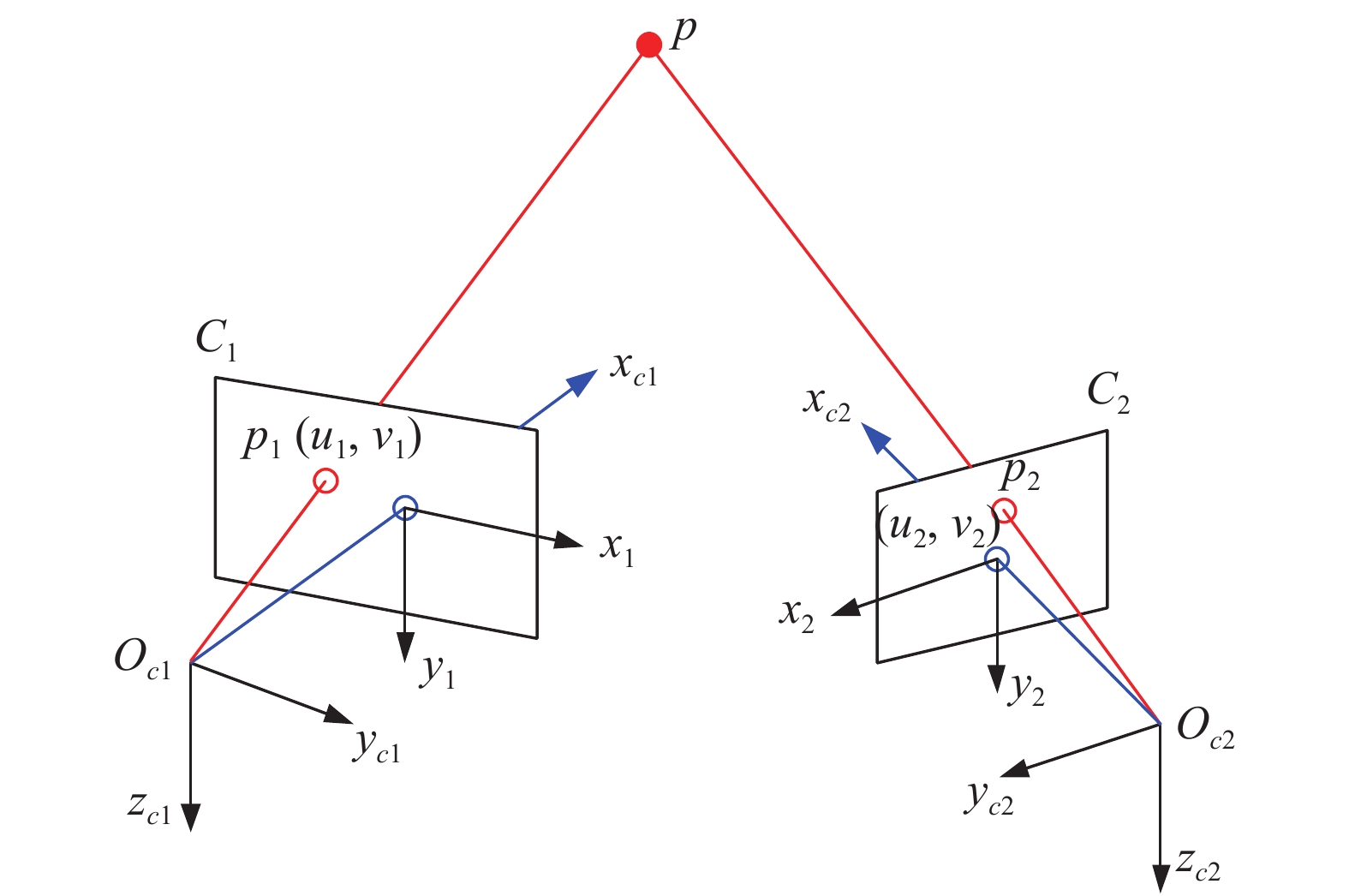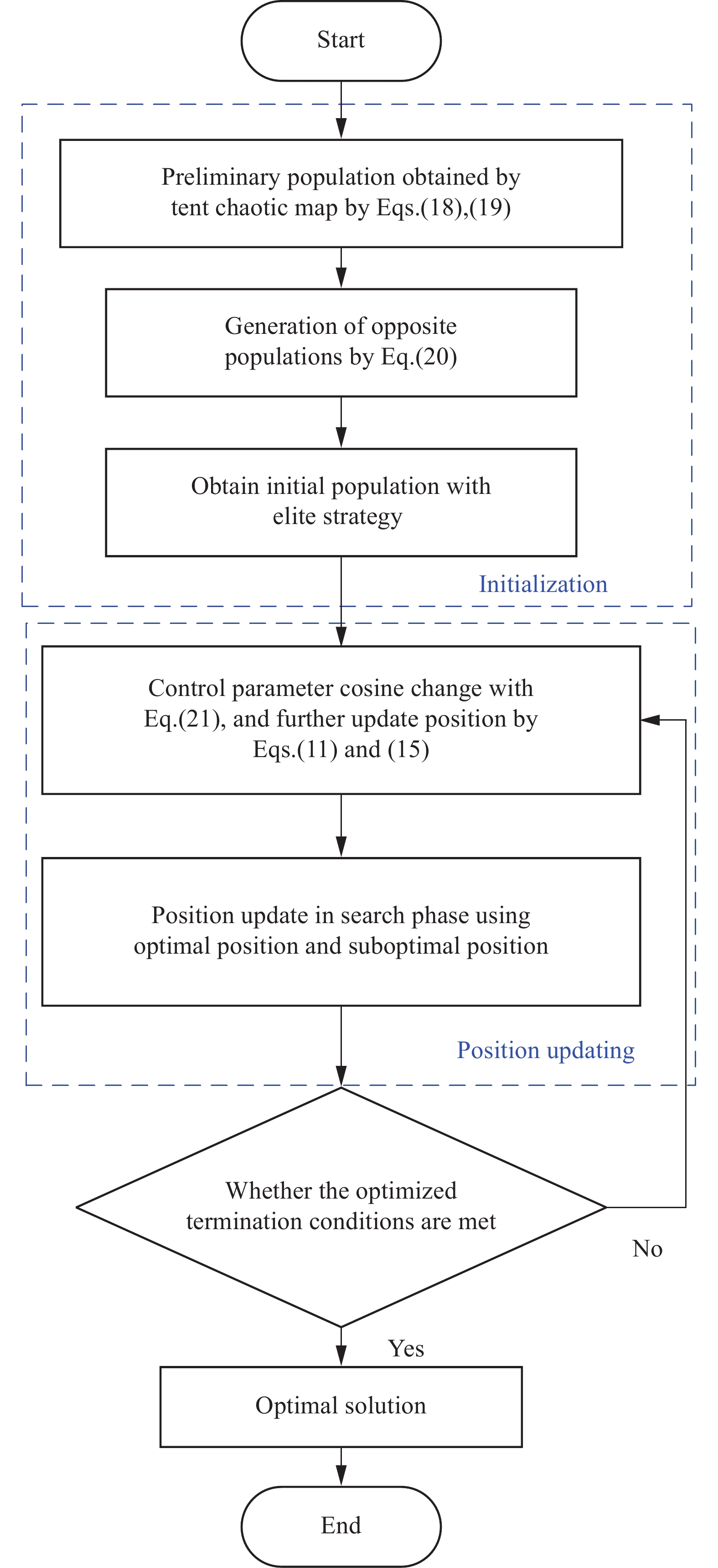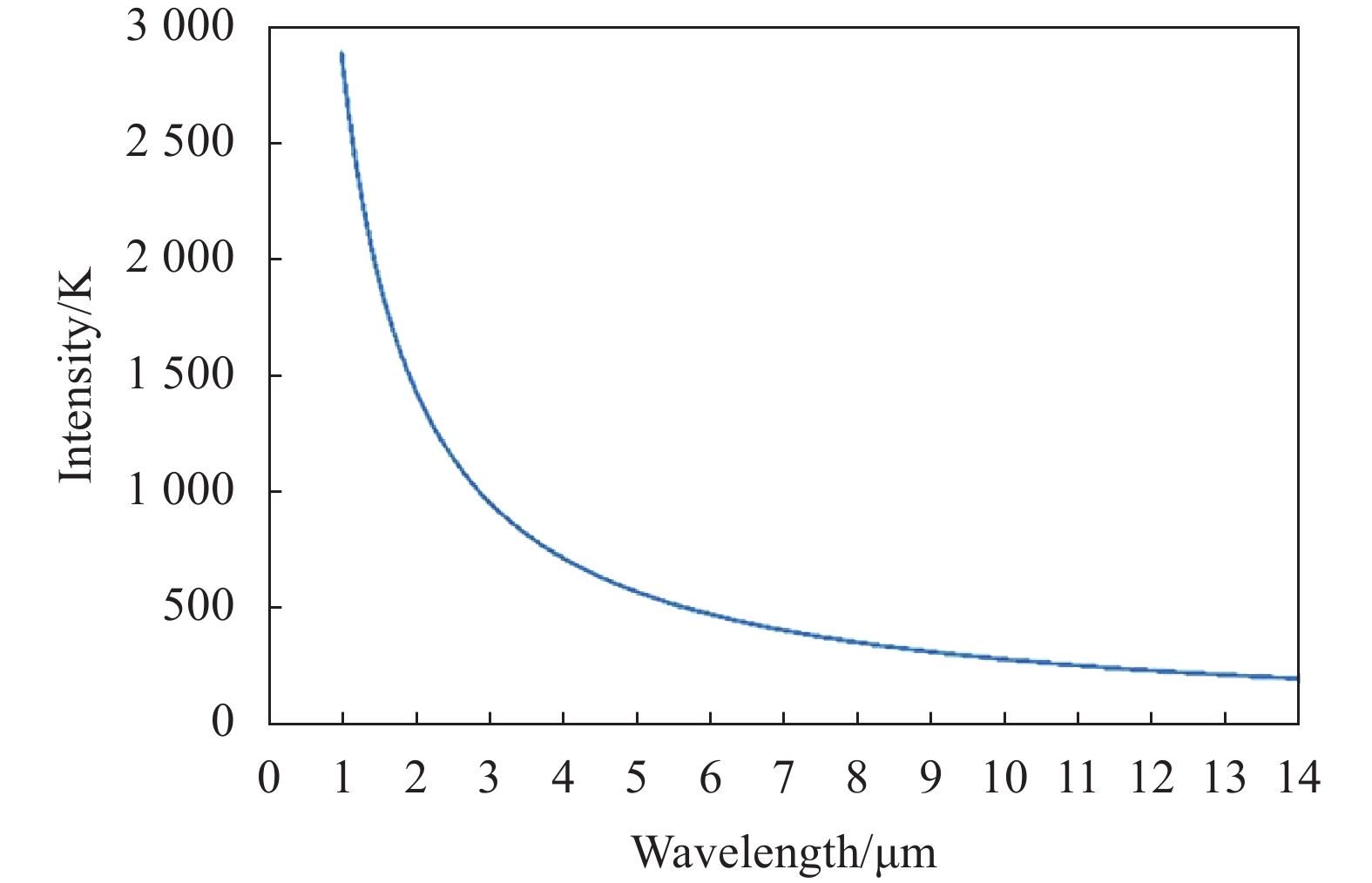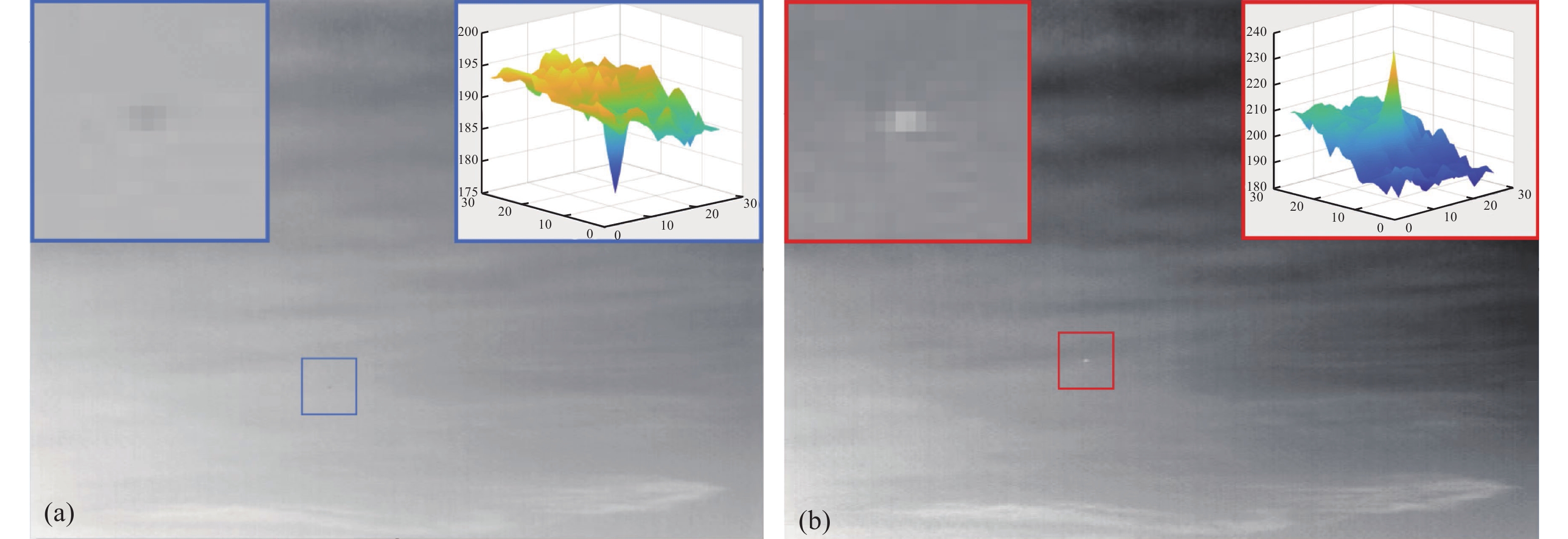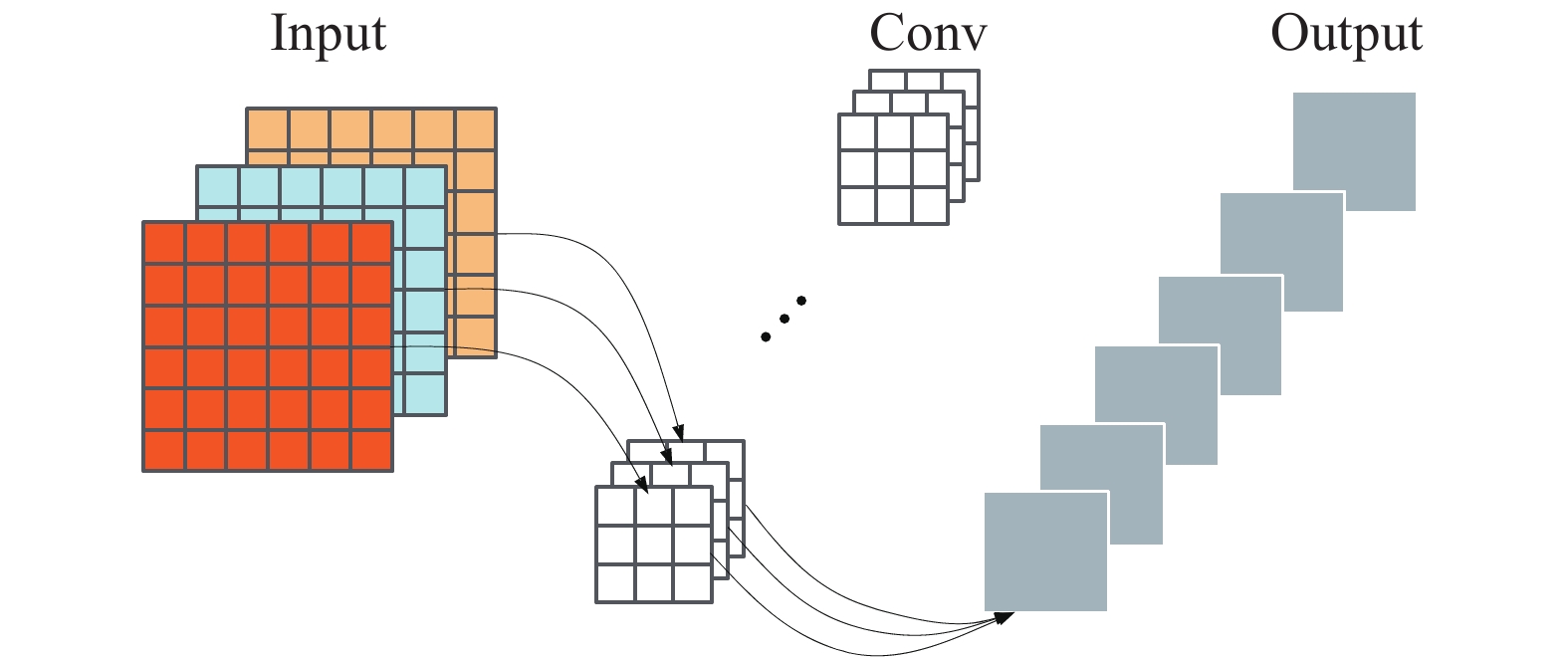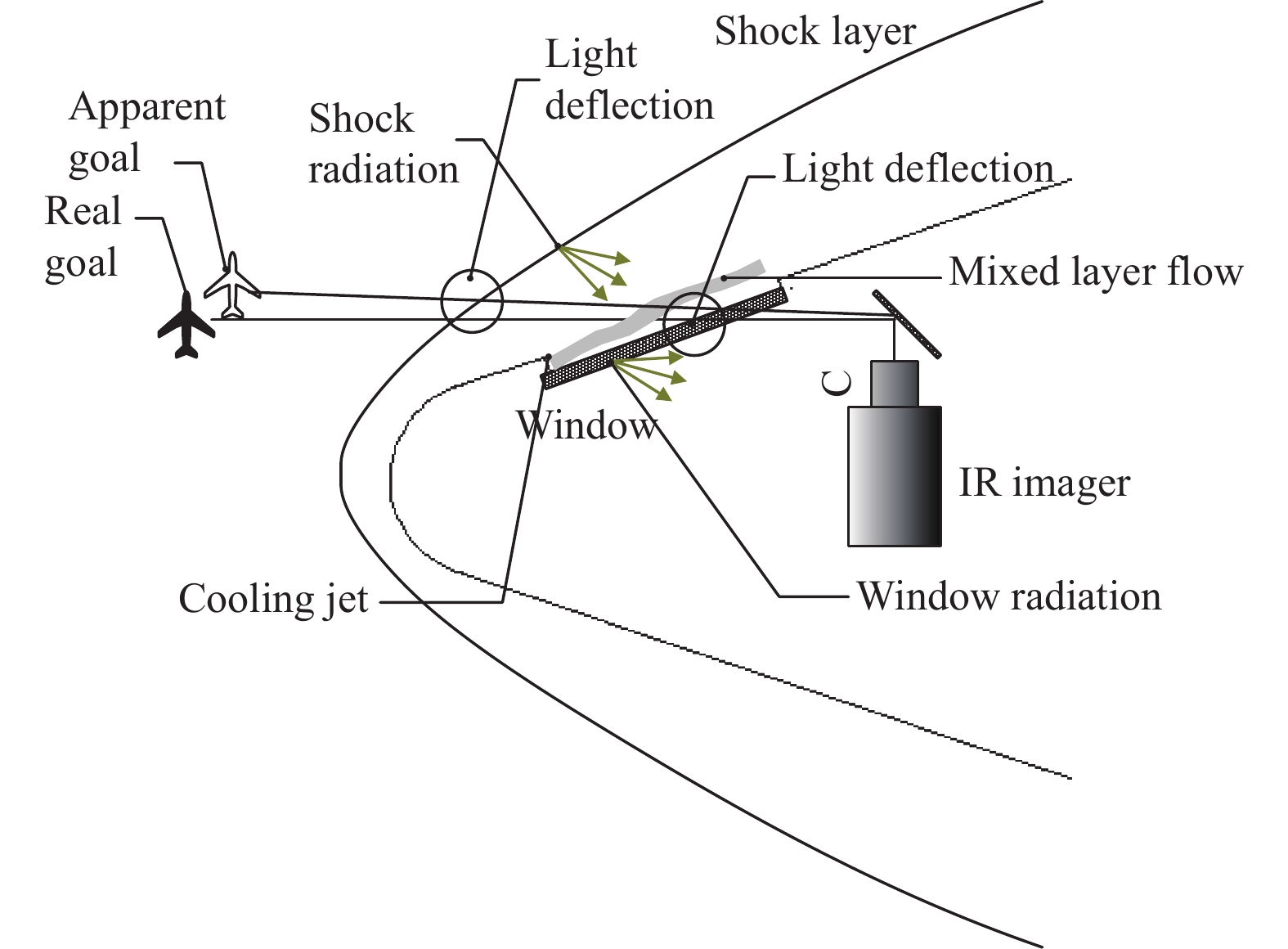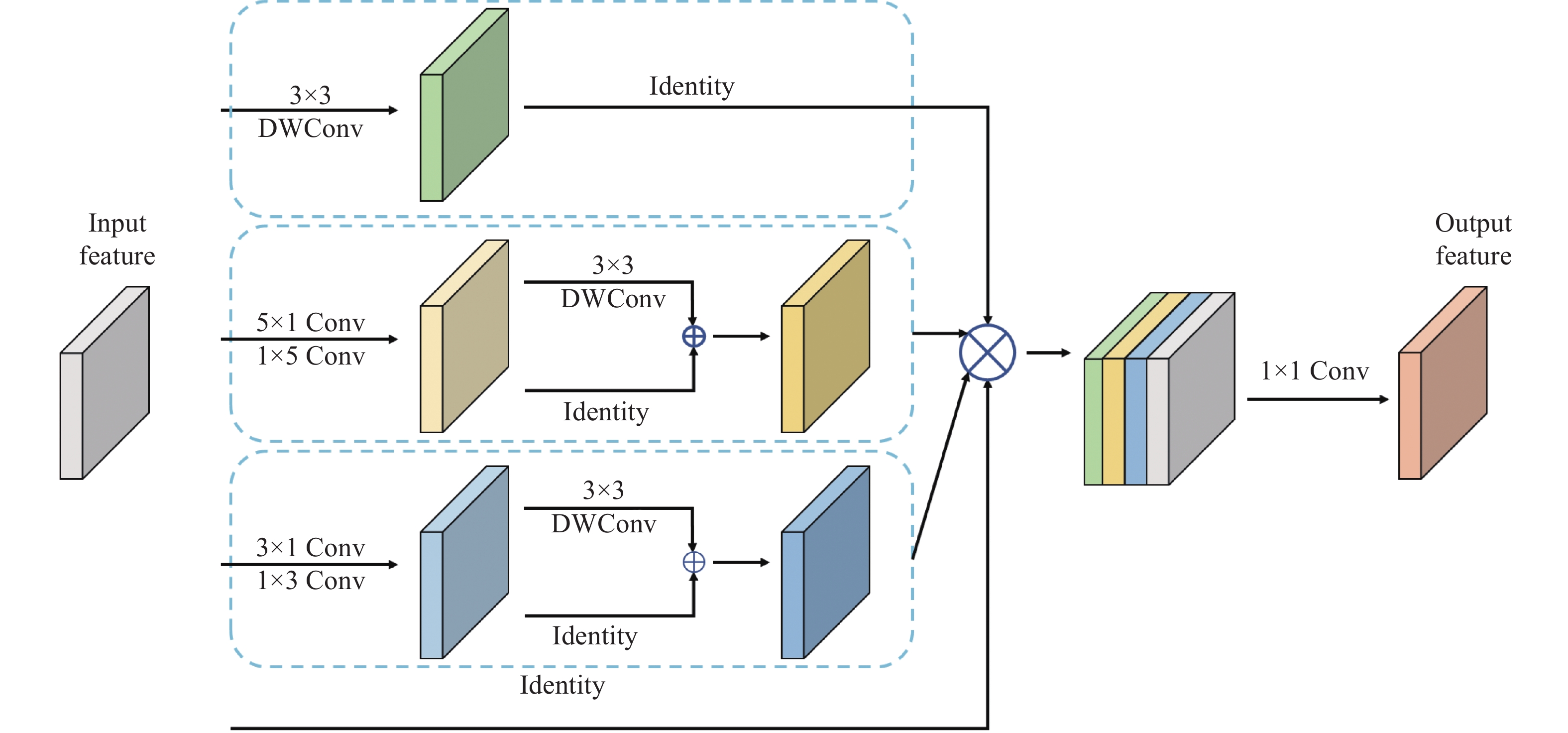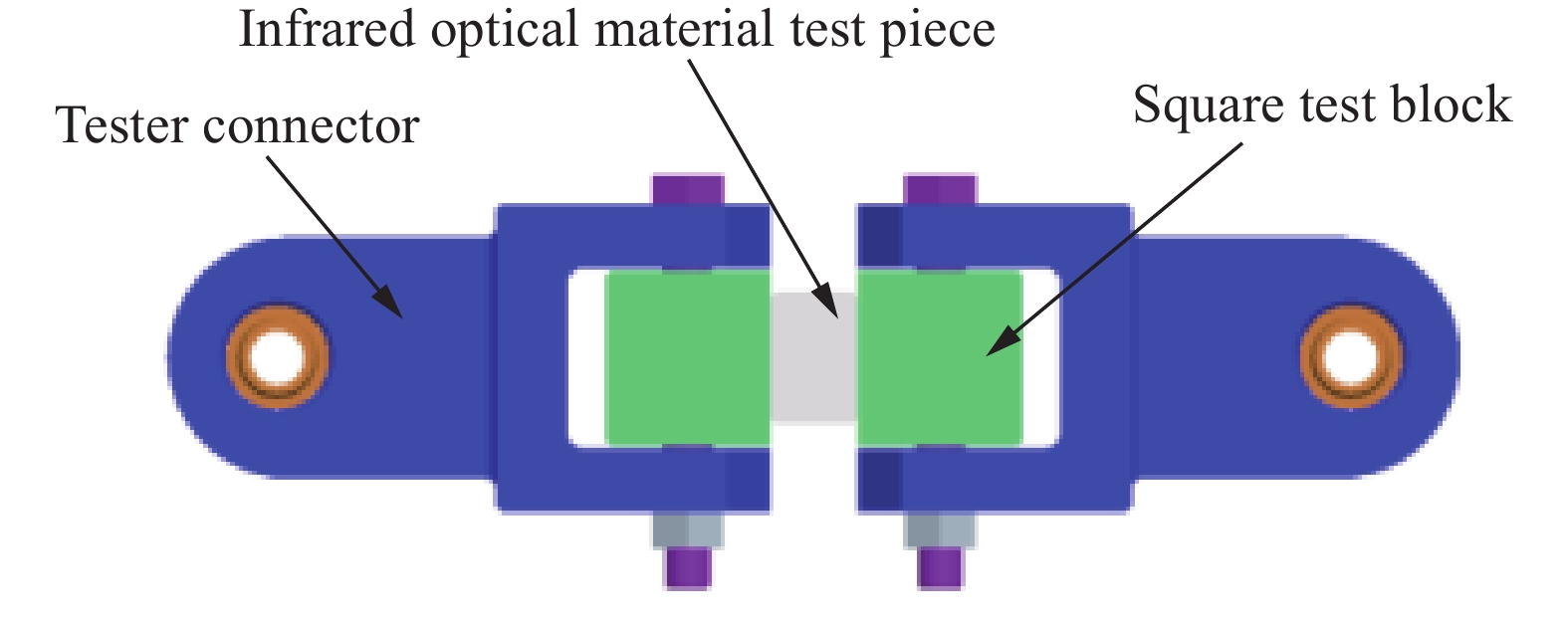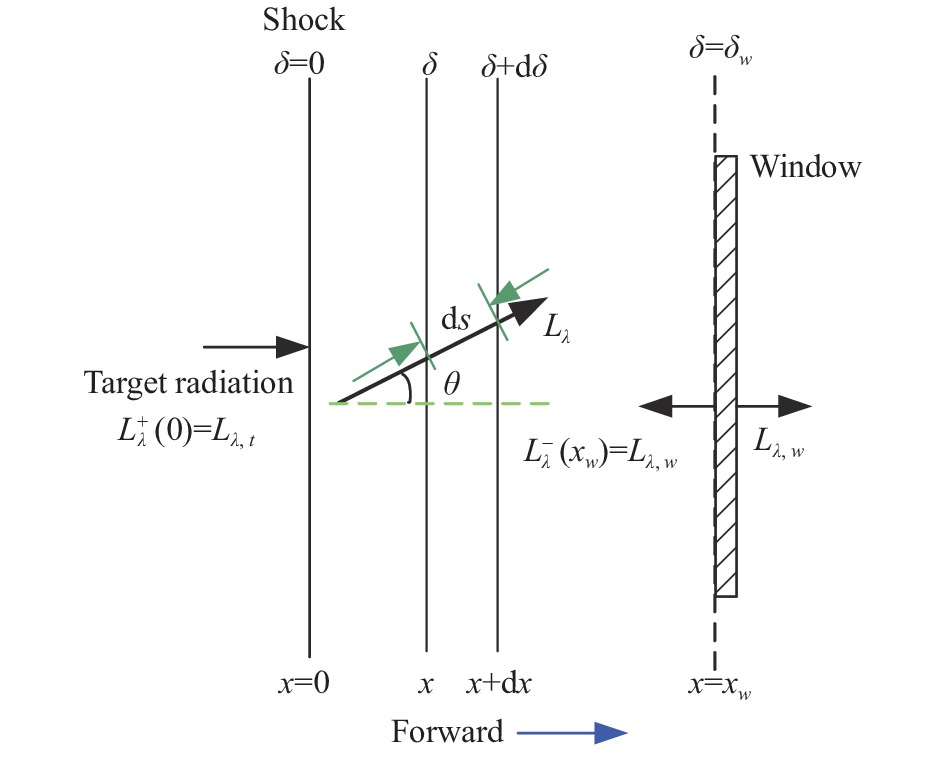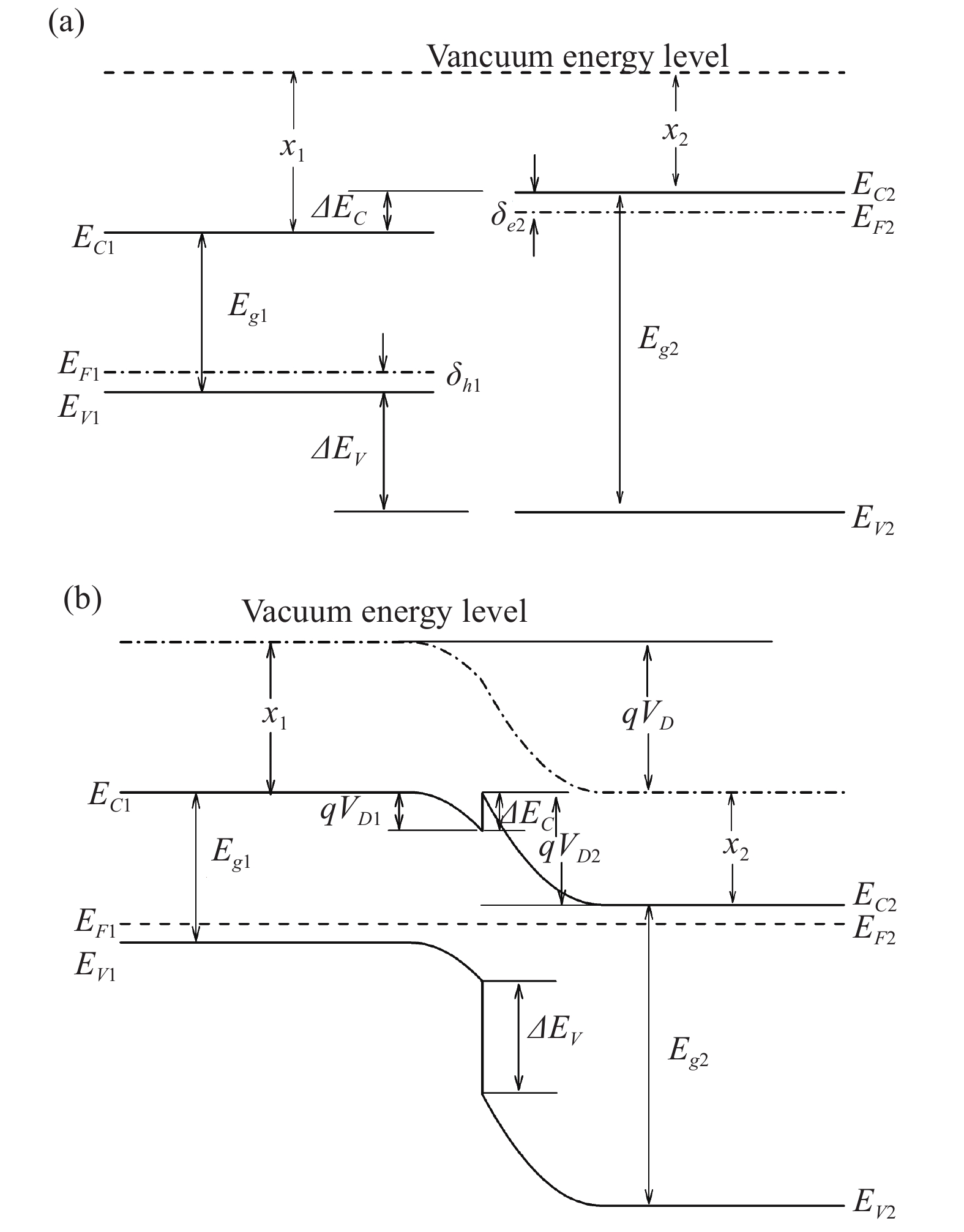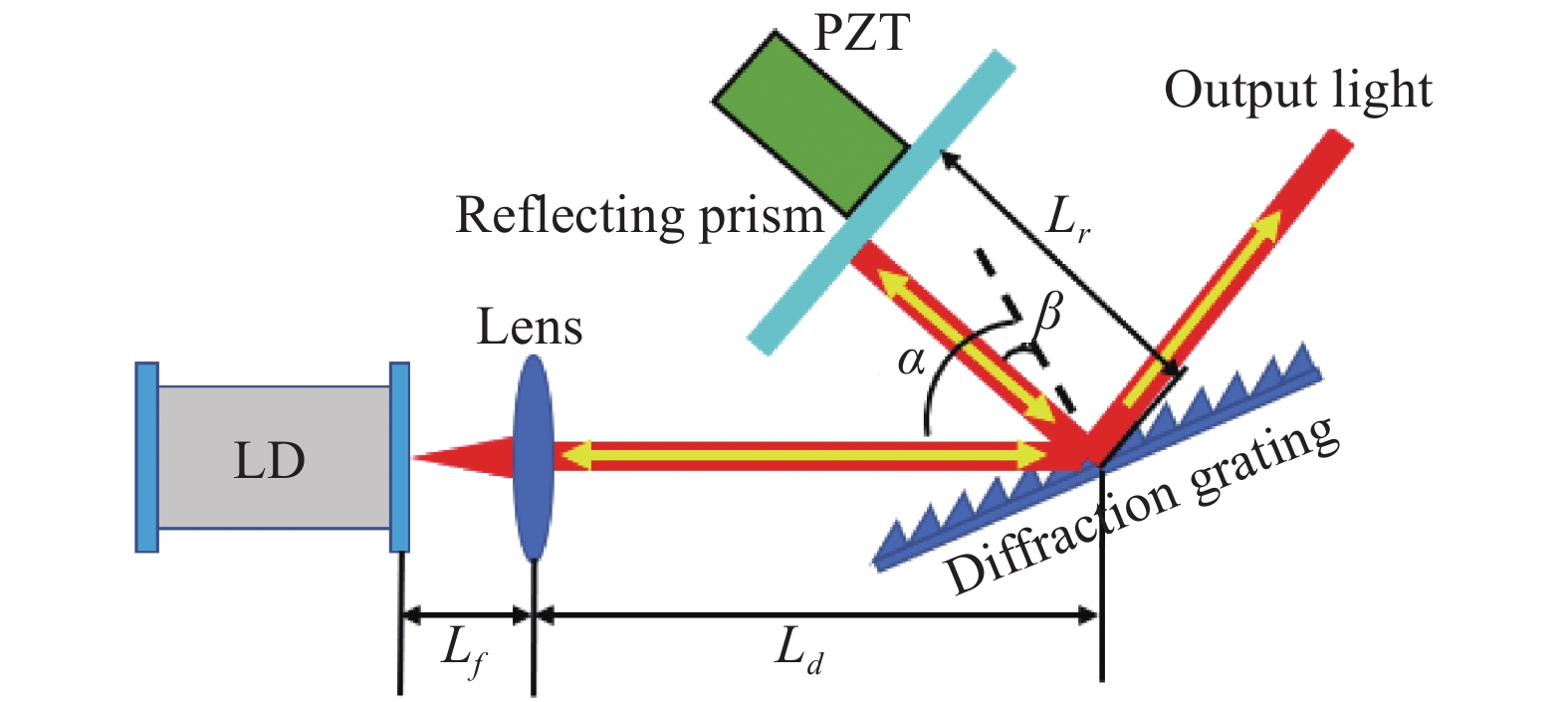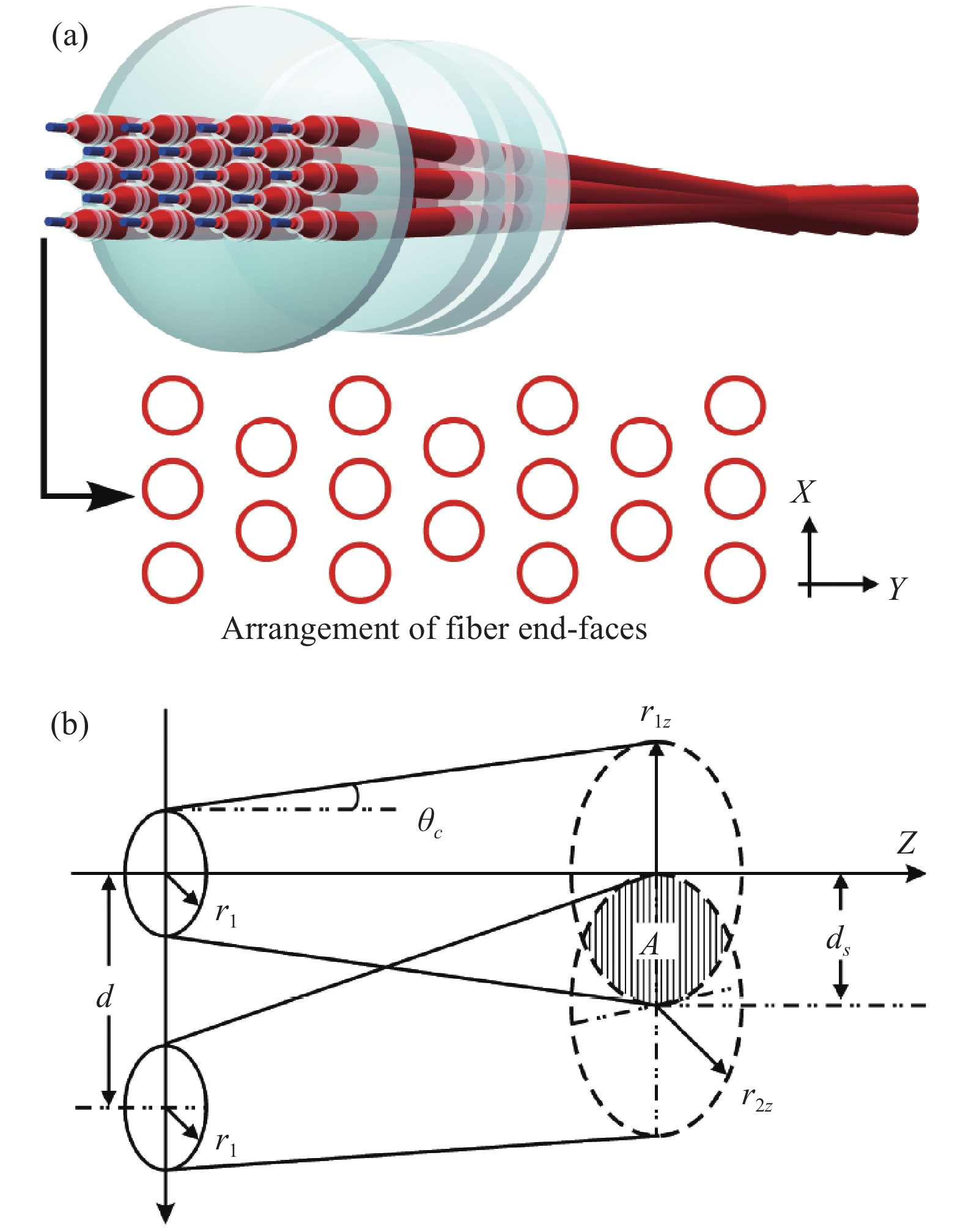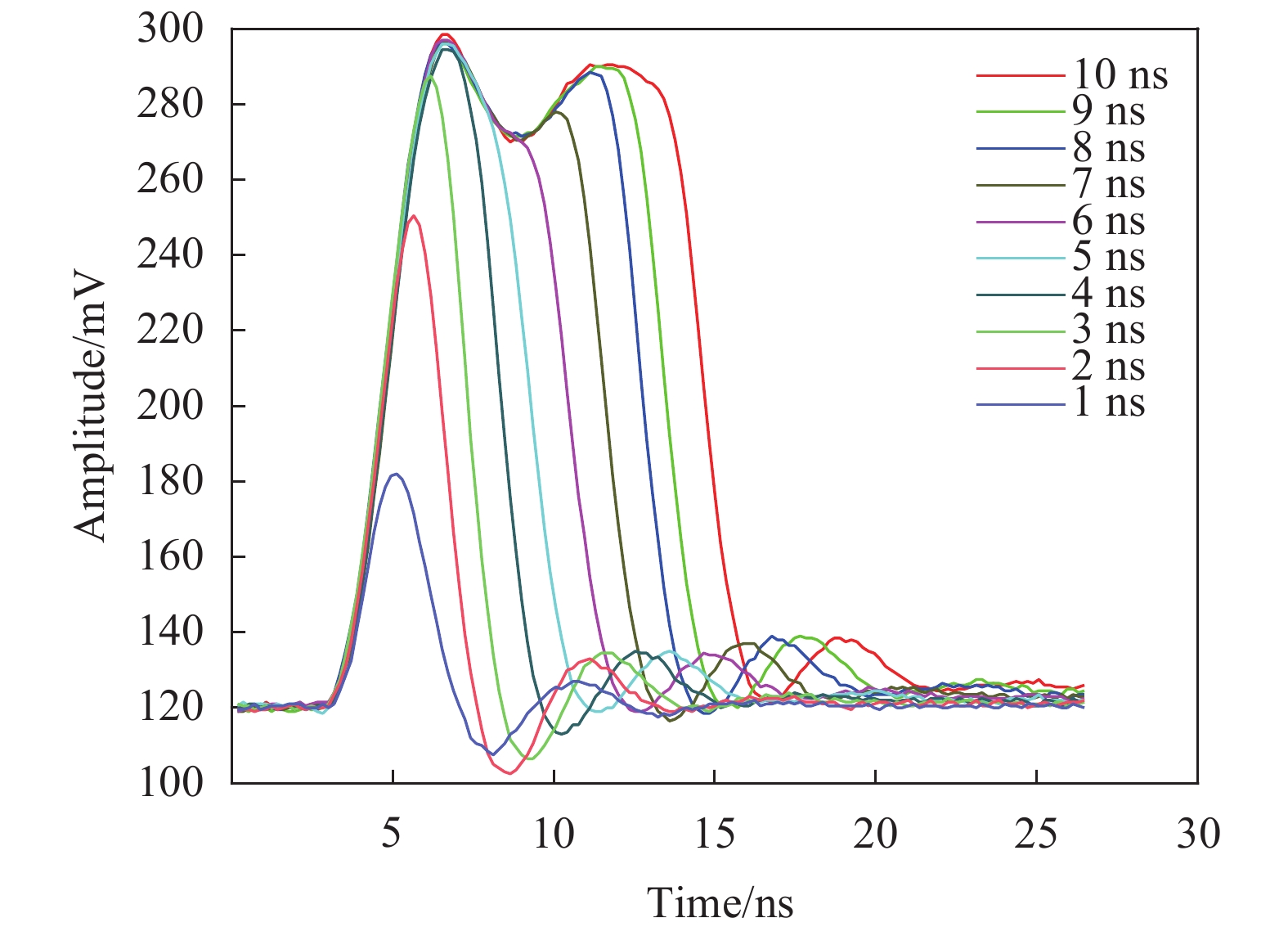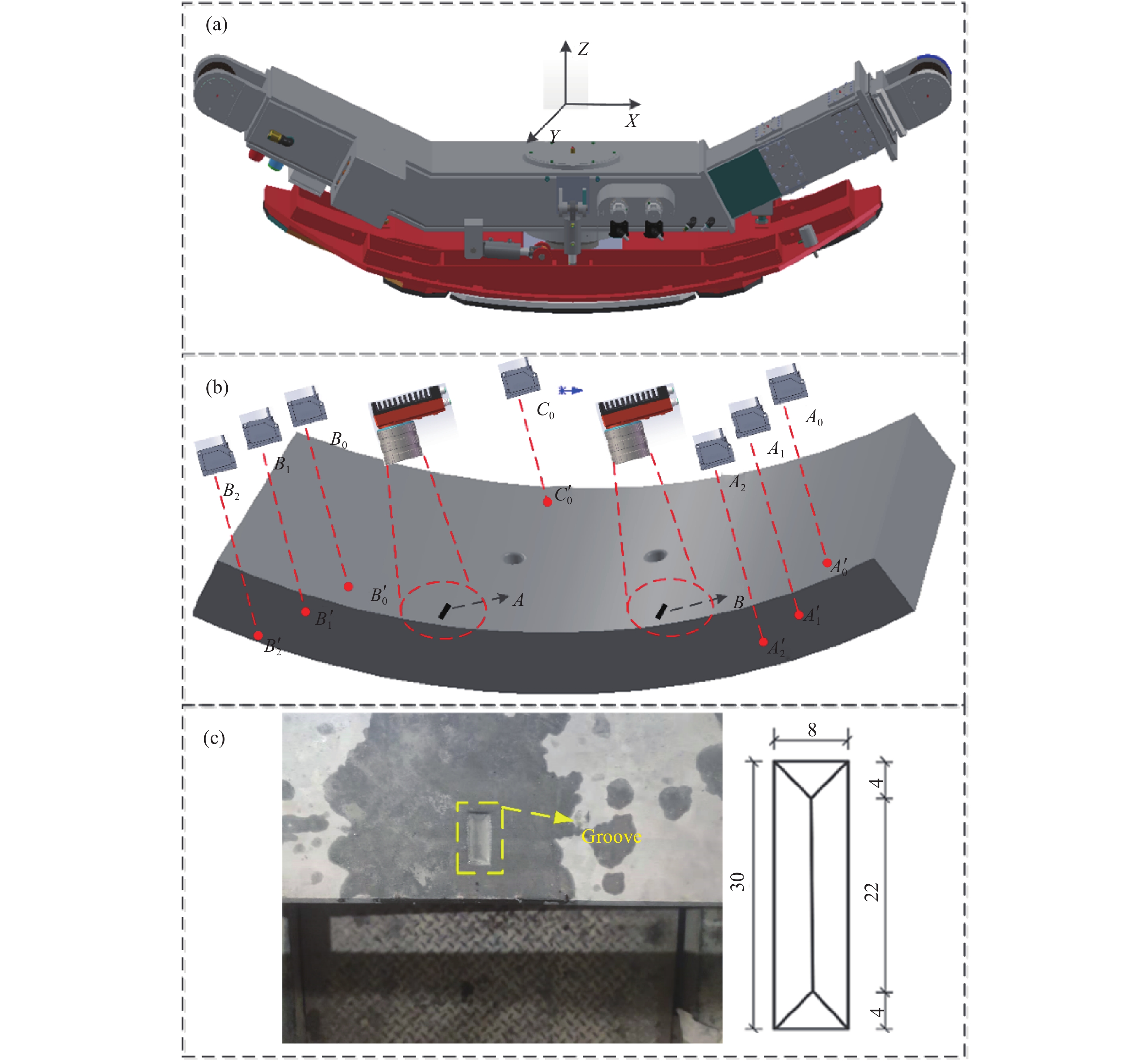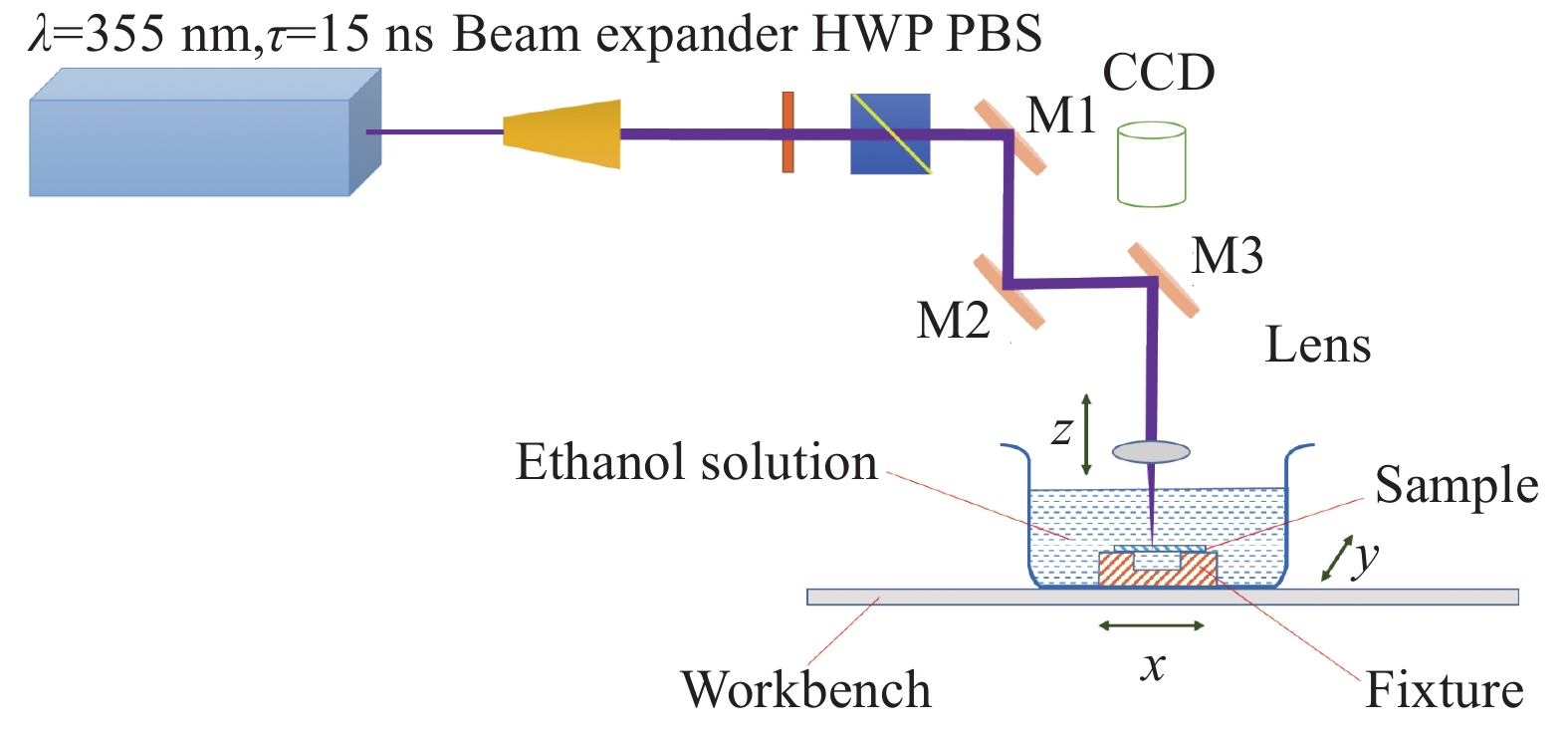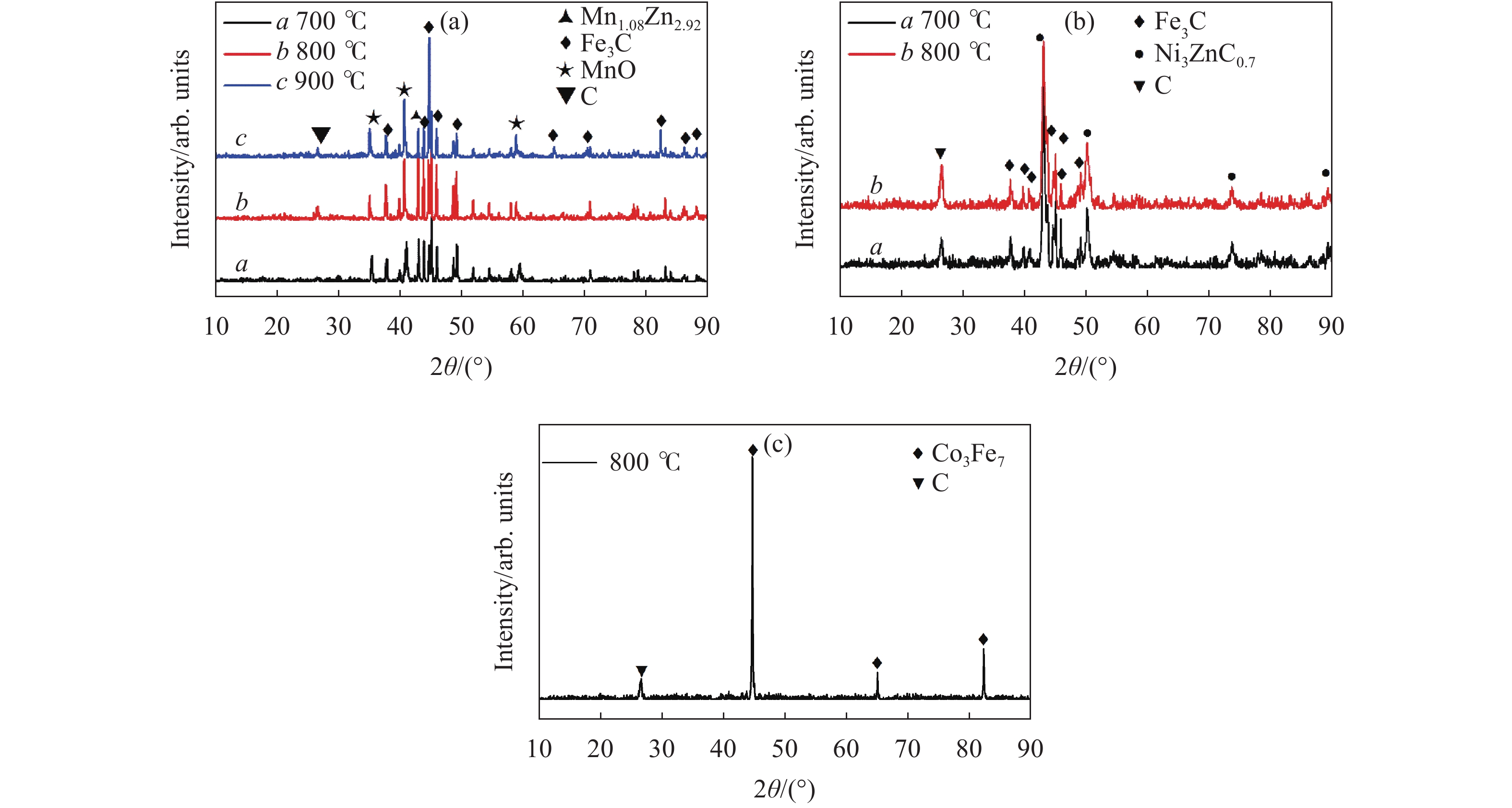2022 Vol. 51, No. 4
column
2022, 51(4): 20210403.
doi: 10.3788/IRLA20210403
For a $ {\text{36}}{{\text{0}}^ \circ } $ 3D shape measurement based on fringe projection profilometry with turntable assistance, calibrating the system’s geometric parameters with a moving stage has the problems of complicated operation and inconvenient carrying. A novel flexible technique was presented to calibrate the monocular system of the panoramic 3D shape measurement based on a turntable consisting of a camera, projector, computer and turntable. The proposed algorithm mainly uses the turntable and marker point to complete the system geometric parameter calibration. For the complete calibration procedure, this method only requires the camera to capture the deformed fringe image of the reference plane, deformed fringe image on the calibration plane after rotation, and marker point image after rotation. In contrast with the traditional method, the proposed method is more convenient and time-saving. The new phase height mapping calibration method was used to reconstruct the calibration plane with a height of 10.000 mm, the result was 10.047 mm. Experiments have been performed to validate the performance of the proposed technique.
2022, 51(4): 20210179.
doi: 10.3788/IRLA20210179
Aiming at the problem that the traditional three-frequency three-step phase shifting algorithm in structured light three-dimensional measurement needed to project too many fringe patterns and has low efficiency, the modified three-frequency three-step phase shifting algorithm was proposed. The proposed algorithm and traditional one both required sinusoidal fringe patterns of three frequencies, but the number of fringe patterns was reduced to 5, that was, 3 fringe patterns of the highest frequency, and one for each of the other two frequencies. Compared with 9 fringe patterns of the traditional algorithm, the projection and capture efficiency was increased by 44.44%. The principle of the proposed algorithm was derived. Three fringe patterns of the highest frequency were used to directly obtain the wrapped phase, and the other two fringe patterns were used to unwrap the phase. In theory, the proposed algorithm owned the same accuracy as the traditional one. Finally, four sets of experiments were conducted to verify the reconstruction accuracy of the algorithm, the reconstruction ability of complex discontinuous models, the reconstruction stability in different illuminations, and the reconstruction ability of color objects. The experimental results prove that the algorithm can effectively improve the measurement speed while maintaining the accuracy and adaptability consistent with the traditional three-frequency three-step phase shifting algorithm.
2022, 51(4): 20210156.
doi: 10.3788/IRLA20210156
According to whether there is frequency difference between two laser beams locked by an optical phase-locked loop (OPLL), it can be divided into homodyne optical phase-locked loop and heterodyne optical phase-locked loop. The progress of heterodyne optical phase-locked loop was mainly introduced, which could keep the frequency difference between lasers relatively stable through frequency discrimination and phase discrimination. Compared with other laser offset locking methods, optical phase-locked loop has the advantages of simple structure, large servo bandwidth, wide offset range and high locking accuracy. It plays a very important role in atomic coherence, cold atom system, coherent beam combining, heterodyne interferometry and other fields, and has received more and more extensive attention. The main method of laser offset locking and the characteristics of optical phase-locked loop were introduced firstly, then the basic model of optical phase-locked loop was introduced, and the basic error model of optical phase-locked loop was analyzed. According to the different realization methods of OPLL, the key technologies and research progress of OPLL were introduced in detail. Then the application progress of OPLL in different fields in recent years was introduced. Finally, the development of this method was summarized and prospected.
2022, 51(4): 20210317.
doi: 10.3788/IRLA20210317
In order to correct the edge deviation of the line laser sensor in profile measurement, an edge deviation correction method was proposed. This method established a hybrid denoising model based on Manhattan distance and Chebyshev distance by analyzing the main error sources of edge deviation, and have achieved the filtering of spurious noise. In addition, the error model of line laser profile measurement was compensated by the least square. In order to verify the effectiveness of this method, the nominal size of the gauge block was used as an evaluation index to carry out measurement and calibration experiments. The experimental results show that the correction method has a significant effect on filtering stray noise. Among them, the uncompensated size measurement error is 0.43 mm, and the size measurement error is compensated is as small as 0.04 mm after the correction method , which is an order of magnitude lower than the former. Therefore, this method can effectively correct the edge deviation and improve the profile measurement accuracy of the line laser sensor.
2022, 51(4): 20210198.
doi: 10.3788/IRLA20210198
Magnetic resonance weak force microscopy (MRWFM) can achieve non-destructive high-precision structural information detection of substances. This advantage makes MRWFM be widely applied in fields of physics, biology, medicine, and so on. The super-sensitive cantilever beam is one of core composition to realize weak force detection in this technology. In recent years, two-dimensional nanomaterials have attracted more and more attention due to their unique physical properties. In order to achieve the detection of the magnetism of two-dimensional nanomaterials, the design of double-arm micro-cantilever beams with differential amplification based on single arm micro-cantilever beam model was proposed. Then the magnetic field distributions inside and outside of the scan balls fastened on the double-arm micro-cantilever beams were analyzed. Finally, the numerical simulation of the cantilever beam was completed, taking the single-crystal silicon cantilever beams and CoSm magnetic ball probe as examples. It is found that the scheme can improve detection sensitivity of cantilever beam significantly.
2022, 51(4): 20210230.
doi: 10.3788/IRLA20210230
Fiber Bragg grating (FBG) has been widely used in monitoring structural health, mechanical operation, aerospace field, and other physical parameters due to its advantages of being lightweight, tiny scale, immune to electromagnetic interference and multiplexing capability.Tunable scanning laser (TSL) was introduced to fabricate an accurate FBG wavelength demodulating system in the near infrared range (NIR) to achieve high-speed, wide-range, and high-precision demodulation. One fiber Fabry–Perot etalon (FFPE) was used as a wavelength marker to extract wavelength. The wavelength scanning range was subdivided to implement piecewise linear demodulation, which solves the nonlinear problem brought about by tunable scanning laser. Another fiber Fabry–Perot etalon was introduced to realize high-accuracy calibration of the demodulation. A polynomial least square curve fitting algorithm was proposed to further enhance demodulation accuracy and stability. This work has been utilizing a near-infrared wavelength scanning laser with a wavelength range of 1525-1565 nm. It showed a very promising result whereby the accuracy of the demodulating system exceeds ±0.5 pm, which achieves high accuracy, simplification and miniaturization.
2022, 51(4): 20210259.
doi: 10.3788/IRLA20210259
The performance of the structural monitoring system (SMS) is the key of structural safety assessment. Aiming at the difficulties of evaluation for in-service SMS, an online performance evaluation method based on data series feature analysis was proposed. In this method, the reference system was used to establish the dynamic comparison benchmark of the measured data, and the performance evaluation model was established by analyzing the structure characteristics of the matched data series under the natural excitation condition. A method based on character representation was proposed to solve the matching problem of data series of different shapes and scales. The field tests show that this method has the adaptability of multi-scale and large-range data series matching, and the calculation deviation of the proposed evaluation indexes for different samples is less than ±1%, so it has the practicability of long-term quantitative evaluation of the structural monitoring systems.
2022, 51(4): 20210392.
doi: 10.3788/IRLA20210392
The wide-field space camera with off-axis and three-reflection structure had large optical distortion, which led to the image motion blur during push-broom imaging of the plane-array detector with time delay integration (TDI) technology. According to the principle of TDI imaging degradation caused by distortion, the distortded image motion blur was converted into non-uniform motion blur, and the initial blur kernel was solved by fitting the image motion path, which was used as prior information to establish a semi-blind restoration model to further refine the blur kernel. Using the rough image edge restored by the initial blur kernel to guide the refinement, a multi-directional weight-heterogeneous total variation model was proposed to extract image structure information. In order to enhance the constraints of prior information on the refinement of the blur kernel, a regular term containing the initial blur kernel was constructed, so that the estimation of the blur kernel did not depend excessively on the image content, and a multi-scale iterative method was used to solve the problem. Finally, a regularization-constrained non-blind deconvolution method was used to remove image blur. Experimental results show that the compared with several existing deblurring algorithms, the deblurring effect of the proposed method is not only clear and natural, but also more stable in the estimation of the blur kernel of different sample images.
2022, 51(4): 20210188.
doi: 10.3788/IRLA20210188
Aiming at the privacy exposure, high technical complexity, and low recognition accuracy existing in the current human motion recognition technology, this paper proposed a human motion recognition method based on a pyroelectric infrared (PIR) sensor. Firstly, a set of PIR sensors placed on the ceiling and modulated by the field of view were used to collect the infrared heat radiation signal emitted by the human body when moving, and the voltage analog signal output by the sensor was filtered and amplified, and then transmitted to the PC through the ZigBee wireless module and packaged into raw data. Secondly, the two-way sensor output data of the original data feature was fused, and the fused data was standardized and packaged into training dataset and test dataset. Then, a two-layer cascaded hybrid deep learning network was proposed to be a classification algorithm of human motion based on the characteristics of the data. The first layer used one-dimensional convolutional neural network (1DCNN) to extract features from the data, and the second layer used gated recurrent unit (GRU) to save historical input information to prevent loss of valid features. Finally, the training dataset was used to train the network model to obtain a classification model with the best parameters, and the correctness of the model was verified through the test dataset. The experimental results show that the accuracy of the proposed motion recognition technology model for basic motion classification is higher than 98%. Compared with image motion recognition or wearable device motion recognition, it realizes high-precision human motion recognition with real-time, convenience, low cost and strong confidentiality.
2022, 51(4): 20210282.
doi: 10.3788/IRLA20210282
A target azimuth estimation algorithm of Synthetic Aperture Radar (SAR) images based on block sparse Bayesian learning was proposed. SAR images were highly sensitive to target azimuth, the SAR image with a special azimuth only highly correlate with those samples with approaching azimuths. The proposed method was developed based on the idea of sparse representation. First, all the training samples were sorted according to the azimuths to construct the global dictionary. Then, the sparse coefficients of test sample to be estimated over the global dictionary should be block sparse ones, that was the non-zero coefficients mainly accumulate in a local part on the global dictionary. The solved positions of the blocks effectively reflect the azimuthal information of the test sample. The block sparse Bayesian learning (BSBL) algorithm was employed to solve the block sparse coefficients and then the candidate blocks were chosen based on the minimum of the reconstruction errors. With the optimal block, the estimated azimuth was calculated by linearly fusing the azimuths of all the training samples in the block thus a robust estimation result could be achieved. The proposed method considered the azimuthal sensitivity of SAR images and comprehensively utilized the valid information in a local discretionary, so the instability of using a signal reference training sample could be avoided. Experiments were conducted on moving and stationary target acquisition and recognition (MSTAR) dataset to validate effectiveness of the proposed method while compared with several classical algorithms. The experimental results validate the superior performance of the proposed method.
2022, 51(4): 20210291.
doi: 10.3788/IRLA20210291
The infrared and visible image fusion technology can provide both the thermal radiation information of infrared images and the texture detail information of visible images. It has a wide range of applications in the fields of intelligent monitoring, target detection and tracking. The two type of images are based on different imaging principles. How to integrate the advantages of each type of image and ensure that the image will not distorted is the key to the fusion technology. Traditional fusion methods only superimpose images information and ignore the semantic information of images. To solve this problem, an improved generative adversarial network was proposed. The generator was designed with two branches of part detail feature and global semantic feature to capture the detail and semantic information of source images; the spectral normalization module was introduced into the discriminator, which would solve the problem that traditional generation adversarial networks were not easy to train and accelerates the network convergence; the perceptual loss was introduced to maintain the structural similarity between the fused image and source images, and further improve the fusion accuracy. The experimental results show that the proposed method is superior to other representative methods in subjective evaluation and objective indicators. Compared with the method based on the total variation model, the average gradient and spatial frequency are increased by 55.84% and 49.95%, respectively.
2022, 51(4): 20210309.
doi: 10.3788/IRLA20210309
Infrared sensing technology effectively handle the problem of night observation, which is becoming an important measure for battlefield reconnaissance. Continuously improving the ability of target recognition based on infrared images was a powerful way to implement precision strikes and situational awareness. Aiming at the problem of infrared image recognition, a Zernike feature selection algorithm based on Light Gradient Boosting Machine (LGBM) was proposed, combined with Sparse Representation-based Classification (SRC) to complete the target category confirmation. Firstly, based on the target area in the infrared image, multi-order Zernike moment features were extracted to characterize the essential characteristics of the target to be recognized; Secondly, the LGBM feature selection algorithm was used to screen the multi-order moment features twice to reduce redundancy and improve the pertinence of features; Finally, the final selected Zernike moment feature vector was classified based on SRC. The method effectively improves the effectiveness of the final features through the feature selection of LGBM, at the same time reduces the computational complexity of classification, which was beneficial to improve the overall recognition performance. The publicly available mid-wave infrared target image data set was used to carry out verification experiments to distinguish and identify 10 types of typical military targets. The experiment was carried out under the three conditions of original samples, noise interference samples and partially missing samples, and compared with several types of existing infrared target recognition methods. The results show that the proposed method can achieve better performance and prove its effectiveness.
2022, 51(4): 20210996.
doi: 10.3788/IRLA20210996
To improve the visual effect and time efficiency of infrared and visible image fusion, the source images were decomposed into a series of high and low frequency sub-bands with the same size and different scales by Finite Discrete Shearlet Transform (FDST). Then, in the fusion process of low frequency sub-bands, the improved spatial frequency was used as the input excitation of Pulse Coupled Neural Network(PCNN), and the link strength was dynamically adjusted to change adaptively according to the image features, which fully preserved the feature information of image contour and edge. In the fusion of high frequency sub-band, the strategy of regional average energy contrast was used to fuse, which highlighted the information such as texture and details as much as possible. Finally, the image with clear background and prominent target was reconstructed with the processed high and low frequency sub-bands by using FDST inverse transform. The experimental results show that the improved fusion method can present the background and target in the image more clearly and comprehensively, compared with other algorithms, and performs the best subjective and objective indicators with the highest operation efficiency.
2022, 51(4): 20210417.
doi: 10.3788/IRLA20210417
To solve the problem that it is hard to find the nonconvex approximation of tensor rank by using nuclear norm in infrared patch tensor model, the obtained non optimal solution further affects. For infrared small target detection, an infrared small target detection algorithm based on dehazing enhancement and tensor recovery is proposed. Firstly, the improved dark channel algorithm is used to dehaze and enhance the infrared image, which improves the definition and indirectly enhances the low rank of the background in the infrared image; Secondly, the matching tensor frontal slices are selected to construct the infrared patch tensor model. Under the framework of tensor singular value decomposition, the detection task is transformed into tensor recovery problem; Finally, a fast algorithm is designed to recover the low rank components and sparse components in the infrared image, which is simple and reduces the complexity of the algorithm. Compared with the methods of filtering and human visual system, the false detection rate of the algorithm in complex background is reduced by 16.6% on average. In common highlighted background areas, the detection performance is good, and the false detection rate can be reduced by 33%. Experimental results show that the algorithm can be applied to complex scenes and eliminate potential false alarm points.
2022, 51(4): 20210393.
doi: 10.3788/IRLA20210393
Infrared dim and small target detection systems can be installed into a wide range of platforms, and has important practical value in the fields of infrared early warning, guidance and so on. However, it is challenging to detect dim and small target in complex background due to the low signal to noise ratio and radical change of background. Consequently, dim and small target detection in complex background is hotspot and hard pot of related field. In this paper, the previous works on IR dim and small target detection were divided into single-frame based (including methods based on local information and nonlocal information) and multi-frame based (including methods based on associated checking and directed calculation), and further the principles, advantages and drawbacks of these methods were analyzed. Finally, the comments and predictions on the development of IR dim and small target detection in the future were provided. Our work is not only a tutorial for the beginner in terms of current works and development trends, but also a reference for other researchers.
2022, 51(4): 20210496.
doi: 10.3788/IRLA20210496
The space optical remote sensor is developing in the direction of higher lightweight rate, but the traditional framing support is difficult to meet the requirement of the system. Bipod flexible support structure based on kinematics principle has good adaptability to mechanical and thermal environment, and has been more and more applied in mirror support of space optical remote sensor. In order to effectively remove the assembly stress, the Bipod flexible supporting structure is usually connected to mirror by optical glue. But there is inevitable shrinkage stress in the curing process of optical glue. In addition, the fluctuations of the ambient temperature and the thermal vacuum test could lead to additional force change, which will have an adverse impact on the shape of the mirror. In this paper, the influence of glue shrinkage on the surface shape of a Bipod flexible support secondary mirror assembly was analyzed. Aiming at the surface shape decline after vacuum deflation test, the combination of stress relief and hot immersion was used to effectively solve the surface shape decline problem, so as to provide technical support for the space environmental application of this kind of optical glue.
2022, 51(4): 20210549.
doi: 10.3788/IRLA20210549
Aiming at the shortcomings of single-band biological compound eye, such as small aperture, short line-of-sight and narrow receiving spectrum, a bionic compound eye optical system with large aperture for receiving visible light and medium-wave infrared was designed. In view of the large volume of the integrated optical path, the common optical path structure was selected for the sub-eye system. Based on the conjugate relation between object and image of entrance window and exit window, the geometric model of sub-eye system mosaic was established. By designing relay image transfer system, the curved image formed by sub-eye array was converted into planar image, which solved the problem of planar detector receiving curved image. The whole compound eye consists of 37 sub-eyes, with a focal length of 30 mm, a field of view of 20°, an entrance pupil of 10 mm, an included angle between the axes of adjacent sub-eyes of 16°, and a combined field of view of 116°. Compared with microlens array compound eye system, this curved bionic compound eye system has longer detection distance and more complete target information. The imaging quality of sub-eye system and receiving system is good, and there is no thermal difference in the temperature range of −40-+60 ℃.
2022, 51(4): 20211103.
doi: 10.3788/IRLA20211103
2022, 51(4): 20211113.
doi: 10.3788/IRLA20211113
Digital readout of infrared focal plane array (IRFPA) orients its development. Compared with traditional analog IRFPA, digital IRFPA has many advantages. The critical technique of digital IRFPA is the digital readout integrated circuit (DROIC). The design and implementation of the 1280 × 1024, 10 μm DROIC was introduced in detail in this paper. The DROIC was tested and the results showed its noise was 157 μV, the power consumption was 165 mW when frame rate was 50 Hz, and the column fix pattern noise was 0.1%. The DROIC interconnected short-wave infrared detector through flip chip successfully and completed imaging. The images had good resolution and rich details. The test results and images’ effect indicated that the DROIC has some features, such as low noise, wide transmission bandwidth and good resistance to interference and so on, and contributes to the development of IRFPA’s performance.
2022, 51(4): 20220004.
doi: 10.3788/IRLA20220004
The exciton polaritons in the semiconductor microcavity driven by light is a hot research field in physics and optics in recent years, and the superposition quantized vortex of the Bose-Einstein Condensates (BEC) driven by light in the microcavity has subversive potential application value in the field of quantum sensing. An accurate mathematical model via Runge-Kutta Difference and FDTD finite element method was constructed to characterize the time-space evolution of the quantum vortex gyrotron polariton system. On this basis, the influence of some key parameters related to pump light, signal light and semiconductor microcavity materials on the evolution characteristics of the quantum vortex gyroscope exciton polariton condensate was studied. For the pump light and signal light, the light intensity and geometric size of the annular spot were considered. Meanwhile, the effect of the microcavity material on the exciton polariton system was converted into the effect of the effective mass on the BEC system through mathematical transformation. By scanning a lot of parameters, some key factors affecting the performance of the quantum vortex gyroscope were obtained, including the geometric parameters and intensity of the pump light, the related influence of the pump light and the signal light, and the material properties of the semiconductor microcavity. The relationship between material properties and superposition state evolution of quantum vortex gyroscope was calculated by characterizing the relationship between effective mass and properties of different microcavity materials, and the range of reasonable values for effective mass was found to be narrow. These works provided an important reference for the engineering prototype development of the quantum vortex gyroscope.
2022, 51(4): 20210985.
doi: 10.3788/IRLA20210985
In the process of high temperature thermal experiment in aerospace, metallurgical casting and other industrial fields, it is necessary to obtain the high temperature on the shelter surface of the test piece quickly and accurately under the condition of high concentration of diffuse medium. The traditional radiation temperature measurement methods include band radiation method, brightness method, colorimetric temperature measurement method, multi-wavelength temperature measurement method and so on, which is the main measurement method to realize high temperature measurement. Due to the effect of medium particles, diffuse medium will produce various spectral scattering, absorption and emission effects, which will bring great interference to the accurate measurement of high temperature and lead to deviation of measurement results. It is necessary to improve classical radiation thermometry. Several main radiation thermometry methods under the condition of diffuse medium were discussed, including experimental data inversion method, thermal radiation calculation method, multi-channel split window method, information recovery calculation method, and neural network calculation method. The advantages and disadvantages of various methods were analyzed, and the challenges and development trends of radiation thermometry methods under the condition of diffuse medium were summarized.
2022, 51(4): 20210942.
doi: 10.3788/IRLA20210942
High throughput materials fabrication and characterization techniques are key to the transformation from materials genome approach to advanced materials R&D and manufacturing practice. Here the authors reported the application of the terahertz (THz-TDS) mapping of the electrical conductance of Cu alloy sample matrix fabricated using high throughput solid state synthesis method. Fast detection of 144 Cu alloy thin films on a single materials library chip were achieved. The mapping technique was based on an algorithm derived from Tinkham equations and Fresnel formula. The THz conductance acquired from alloy thin films of either uniform or continuous gradient thickness agreed semi-quantitatively with those determined with four-probe method. Distinctive conductance differences among the 144 Cu alloy samples were obtained within one batch. Further analysis of the changing trends in the microstructures and semi-quantitative compositions of representative samples against their electrical conductance revealed a clear composition-structural-function relationship. This study demonstrated that THz-TDS may be a powerful tool for fast high throughput screening of Cu alloy materials library chip, and facilitate the R&D procedure substantially.
Infrared dim moving target detection technology is a hot and difficult research area in computer vision. To deal with the challenges of target detection with airborne in high dynamic air to ground background, such as dynamic scene change, large background interference intensity and unknown target motion law, a novel incremental inertial navigation information assisted air to ground infrared dim moving target detection algorithm was proposed. To solve the drift error problem of traditional inertial navigation information prediction, the concept of incremental inertial navigation information was put forward. The location prediction model of incremental inertial navigation information (LPI) was designed and the accurate prediction of the target point was achieved. A moving target detection framework was constructed based on inertial navigation information assistance and background difference, which corrected the images under different positions and attitudes by LPI. The cross correlation matching algorithm based on mountain climbing method was introduced to calculate the translation parameters, and Gaussian weighting was used to estimate the background. The dim moving target could be detected by adaptive threshold segmentation. The simulation experiments verified the effectiveness and accuracy of the proposed detection algorithm.
2022, 51(4): 20220194.
doi: 10.3788/IRLA20220194
In order to reduce the influence of aerodynamic thermal radiation generated during the reentry process of hypersonic vehicle on the performance of infrared detection window, from the perspective of trajectory optimization, a trajectory optimization algorithm of hypersonic vehicle based on improved whale optimization algorithm was proposed with the total infrared radiation of reentry flight stagnation point as the objective function. Firstly, the Whale optimization algorithm was improved by Tent chaotic map and control factor chord change. The position directivity of the algorithm was improved when the position was updated, and the global search ability of the algorithm was enhanced. At the same time, the reentry trajectory optimization problem was transformed into the parameter optimization problem of the control profile, and a one-time reversal strategy of the inclination angle was proposed. The Planck formula was used to calculate the infrared radiation of the stagnation point, and the objective function was designed. The resistance acceleration was used to enter the corridor to deal with the path constraint. The penalty function method was used to combine the terminal constraint with the objective function. Finally, the improved Whale optimization algorithm was used to optimize the parameters of the designed control profile to obtain the optimal solution of the objective function. The simulation results showed that the improved whale algorithm can effectively complete the reentry trajectory optimization task with the minimum total infrared radiation, and has strong global search ability and good robustness.
2022, 51(4): 20220161.
doi: 10.3788/IRLA20220161
With the development of technology, modern warfare puts forward higher requirements for new weapons, and the development of hypersonic vehicles has attracted much attention. Infrared imaging equipment plays an important role in the terminal guidance field of hypersonic vehicles. Infrared imaging equipment is susceptible to interference from background radiation and thermal radiation from windows, and the background noise generated by the interference can easily cause imaging saturation. The imaging effects of mid- and long-wave thermal imagers were compared by experiments, high-temperature objects, the sun, clouds, sea surface, jamming bombs and rotating, high speed, high dynamics conditions. And the effects of spinel, yttrium oxide, zirconia and zinc sulfide materials' own thermal radiation on the imaging of medium and long wave thermal imaging instrument were compared, the relative attenuation rate of transmittance of windows at high temperature was obtained by testing. The comparative analysis show that the long wave thermal imager has advantages in anti-interference, and the zinc sulfide material has the advantages of low radiation, high transmittance and good pressure resistance. Mid- and long-wave comparison tests provide reference and support for the selection of working wavebands and window materials, and have reference value for the subsequent design and research of mid-long wavelength dual-band systems.
2022, 51(4): 20220171.
doi: 10.3788/IRLA20220171
Aiming at the problems of insufficient background suppression and high computational complexity of existing infrared small target detection methods, which lead to high false alarm rate and slow response speed of infrared reconnaissance and early warning system, a high-dynamic infrared small targets detection method based on double-neighborhood difference amplification was proposed. Firstly, the mean value characteristics of target and neighborhood in real infrared images was analyzed. Then, the difference between the target area and the inner and outer bilayer neighborhood was calculated, so as to improve the local contrast of bright and weak small targets and suppress complex background and noise. Finally, an adaptive threshold segmentation algorithm was used to obtain the target location. Aiming at the problem that signal-to-clutter ratio gain and background suppression factor were difficult to objectively evaluate the performance of target enhancement and background suppression of infrared image sequences, a target trajectory saliency graph evaluation method was proposed to evaluate the target detection performance of infrared image sequences effectively. Experimental results showed that compared with similar detection methods, the signal-to-clutter ratio gain and background suppression factor of this method were increased by 12% and 10%, respectively, and the running time was shortened by about 34 ms. Therefore, this method is an effective and feasible method for high dynamic infrared small targets detection.
2022, 51(4): 20220167.
doi: 10.3788/IRLA20220167
Aiming at the problem of reliable detection and accurate recognition of high dynamic aerial targets by infrared detectors carried by hypersonic vehicles in complex background, an aerial polymorphic target detection method based on deep spatial-temporal feature fusion was proposed. A weighted bidirectional cyclic feature pyramid structure was designed to extract the static features of polymorphic target, and switchable atrous convolution was introduced to increase the receptive field and reduce spatial information loss. For the extraction of temporal motion features, in order to suppress the complex background noise and concentrate the corner information into the moving region, the feature point matching method was used to generate the mask image, then the optical flow was calculated, and the sparse optical flow feature map was designed according to calculation results. Finally, the temporal features contained in multiple continuous frame images were extracted by 3D convolution to generate a 3D temporal motion feature map. By concatting the image static features and temporal motion features in channel dimension, the deep spatial-temporal fusion could be realized. A large number of comparative experiments showed that this method can significantly reduce the false recognition probability in complex background, and the target detection accuracy reached 89.87% with high real-time performance, which can meet the needs of infrared targets intelligent detection and recognition under high dynamic conditions.
2022, 51(4): 20210290.
doi: 10.3788/IRLA20210290
Ground infrared target detection is a key technology in the fields of camouflage protection and precision guidance. For the current deep learning-based target detection model to detect infrared targets in the ground background, it is easy to be interfered by complex backgrounds and insufficient attention to the target, which leads to the problem of low detection accuracy. A method of ground infrared target detection based on a parallel attention mechanism was proposed. Firstly, the parallel down-sampling method of convolution and attention was used to reduce the spatial complexity of the model and increase the training speed, while focusing and paying attention to the target features. Secondly, the multi-scale features extracted by the backbone network were fused to suppress the interference of background information and improve the accuracy of target detection through the multiplexing and complementary of different scale information. Finally, the focal loss and CIOU loss were used to improve the classification and regression accuracy of the model. The experiment results showed that the average detection accuracy of the model on the Infrared-VOC dataset was 82.2%, which was 6.9% higher than YOLOv3. At the same time, the space complexity of the model was only 32.6% of YOLOv3, and the training time was 43.7% of YOLOv3. The improvement of model training efficiency and detection accuracy was achieved.
2022, 51(4): 20220228.
doi: 10.3788/IRLA20220228
Infrared imaging detection technology is an important means of precision guidance. With the development of missile weapons to supersonic and hypersonic, the working environment of infrared imaging detection devices is worse. The structure safety of infrared windows faces great challenges because of the severe aerodynamic thermal environment in high speed flight. The radiation interference of high-temperature radiation sources such as shock wave and window seriously affects the infrared detection ability. The transmission effect of flow field and window reduces the detection and guidance accuracy. Aero-optical effect is the most essential difference between high-speed infrared detection and traditional infrared detection, and it is also the key factor to determine the feasibility of infrared detection applied to high-speed missiles. This paper mainly introduced the aerodynamic thermal effect, thermal radiation effect, transmission effect and their influence of high-speed infrared imaging detection, expounded the progress of aero-optical effect in mechanism research, test research, numerical simulation and correction technology, and finally gave the thoughts and suggestions on the research of aero-optical effect of high-speed infrared detection.
2022, 51(4): 20220233.
doi: 10.3788/IRLA20220233
The infrared polarization object tracking under dynamic scenes has a demand for real-time performance and low power consumption. FPGA has the characteristics of parallel computing, which can greatly improve the system throughput and data processing speed, and can meet the requirements of real-time. Therefore, a target detection and tracking system based on FPGA was designed and implemented. On the hardware development platform, the methods of modularization and software and hardware collaborative design were adopted to realize the tasks with different computing characteristics in PS (ARM) and PL (FPGA). PL was responsible for the acceleration of some algorithms, data transmission between FPGA and ARM processors, HDMI and other interface logic control. PS was responsible for the implementation of more complex detection and tracking algorithms, and controlled each module in FPGA. Finally, the target detection and tracking system was tested and analyzed, and the hardware resource consumption and power consumption of the system were also given in the experiment. The results showed that the purposed target detection and tracking system can meet the requirements of real-time and low power consumption..
2022, 51(4): 20220193.
doi: 10.3788/IRLA20220193
According to the characteristics of infrared targets, an anchor-free lightweight infrared target detection method was proposed, which improved the detection ability of embedded platform. For the platform with limited computing resources, a new lightweight convolution structure was proposed. Asymmetric convolution was introduced to enhance the feature expression ability of standard convolution, reducing the amount of parameters and computation effectively. A lightweight feature extraction unit was constructed by designing parallel multi-feature path, which generated rich features through channel concatation, then combining with attention module and channel shuffle. SkipBranch was added to promote the transmission of shallow information to the high level and further enrich the characteristics of the high level. Experiments on FLIR dataset showed that the accuracy of the designed lightweight network structure was 81.7%, which exceeded YOLOv4-tiny. However, the model parameters and calculation amount were reduced by 75.0% and 71.1% respectively, and the reasoning time was compressed by 91.3%, which could meet the real-time detection requirements of infrared object on embedded platform.
2022, 51(4): 20220166.
doi: 10.3788/IRLA20220166
The deep learning algorithm based on convolutional neural network exhibits excellent performance, but also brings a complex amount of data and calculation. A large amout of storage and computing overhead has alse become the biggest obstacle to the deployment of such algorithms in hardware platforms.The neural network model quantization uses low-precision fixed-point numbers instead of high-precision floating-point numbers in the original model, which can effectively compress the model size, reduce hardware resource overhead, and improve model inference speed on the premise of losing less precision. Most of the existing quantization methods quantize the data of each layer to the same accuracy, while mixed-precision quantization sets different quantization accuracy according to the data distribution of different layers, aiming to achieve a higher model accuracy under the same compression ratio, but finding a suitable mixed-precision quantization strategy is still very difficult. Therefore, a mixed-precision quantization strategy based on error limitation was proposed. By uniformly and proportionally limiting the scaling factors in each layer of the neural network, the quantization accuracy of each layer was determined, and the truncation method was used to linearly quantize the weights and activate to low-precision fixed-point numbers. Under the same compression radio, this method had higher accuracy than the unified precision quantization method. Secondly, the classical object detection algorithm YOLOV5s based on convolutional neural network was used as the benchmark model to test the effect of the method. On the COCO data set and VOC data set, compared with the unified precision quantization, the mean average precision (mAP) of the model compressed to 5 bits was improved by 6% and 24.9%.
2022, 51(4): 20210337.
doi: 10.3788/IRLA20210337
The environmental tolerance of infrared detectors depends on complete and effective environmental tolerance measures in design and manufacturing. The environmental test and evaluation of infrared detectors verify the ability to work normally in extreme environments. The purpose of the test at each stage of development, production and use is different, and the amount of stress applied by the test is different. It is necessary to measure the natural conditions and inducing conditions, and to analyse the investigation of temperature response characteristics and test environment. According to the measure and the analysis, to select the correct, reasonable and necessary design and test environmental conditions collect the most suitable test data as much as possible, to ensure the quality level required by customers and the availability of competitive prices. The temperature response test measured data of 288×4 infrared focal plane Dewar module and time constant method were used to calculate and analyze the temperature stabilization time. The results showed that, in the temperature cycles screening and erature shock test, a sudden temperature change stress greater than 10 ℃/min could not impose on the functional parts of the infrared detector, and the defect screening effect of the cold head part was better when the temperature change rate of the high temperature working state was greater than 50 ℃/min. The test results indicate that the stress for vacuum integrity is greater than +90 ℃ for 2160 h in the vacuum integrity constant high temperature test. The products passed the failure-free environmental test assessment at high-temperature +71 ℃ and low-temperature −54 ℃ have the potential to be stored, transported and used all over the world.
2022, 51(4): 20210295.
doi: 10.3788/IRLA20210295
Adhesive bonding is a commonly used support method, which is often used for the connection of infrared lenses and frames. Therefore, it is of great value to research the mechanical properties of adhesive in various environments to improve the environmental adaptability of infrared optical remote sensors. Germanium and titanium alloy, silicon and invar were selected as two groups of research objects, epoxy adhesive was used for bonding, and its mechanical properties were studied by tensile and shear tests. Firstly, the test method and process of mechanical properties were introduced. Then, on the basis of simulation analysis, the tensile and shear strengths of the two groups of test objects were tested in three different environments, and the test data were less discrete and more reliable. At last, the test data were summarized, and it was found that the tensile strength of epoxy adhesive was 1.4 times the shear strength, which could meet the requirements of bonding and fixing between different materials, and had good environmental adaptability. The test data obtained can be used as the basis for the design of infrared optical remote sensing, which has high application value.
2022, 51(4): 20210376.
doi: 10.3788/IRLA20210376
CO2 is the main source of radiation noise in mid-infrared and short-infrared detection. The research on radiation and transmission property of CO2 at high temperature is still not clear at present. The absorption effect of CO2 in the shock layer was mainly studied, and the thermal radiation of CO2 and radiation component proportion on the photosensitive surface were analyzed and calculated. The improved tangent-slab approximation method was used to solve the radiative transport equation, and the influences of target and window radiation on the radiation field distribution in the shock layer were considered. Based on this, the radiation and transmission property of shock layer were deduced. Finally, the calculation model of each radiation component and proportion of the photosensitive surface was given. The property of the shock layer of a supersonic missile at an altitude of h=1 km and flight speed of Ma=3-5 was simulated and calculated. The results showed that the transmittance of shock layer in mid-wave bands is lower than that in short-wave band, but shock layer absorption can be ignored in general. The increase of flight speed leads to a broadening of the CO2 radiated noise region to the long-wave direction, and the target signal is submerged seriously by CO2 radiation noise in the band above 4.4 μm under condition of Ma≥4 and h=1 km, the filter with a cutoff wavelength of 4.4 μm is not suitable.
2022, 51(4): 20210399.
doi: 10.3788/IRLA20210399
In this article, the dark current dominant mechanism of longwave infrared detectors based on InAs/GaSb superlattice were analyzed by using the analytical current model of diode. Firstly, the I-V test of variable area diode were performed, which confirm the dark current of InAs/GaSb superlattice longwave detector passivated by anodic sulfidization and SiO2 were mainly originated from bulk current, not from surface leakage current; Then, the dark current of InAs/GaSb longwave infrared detectors were fitted by the current model of diffusion current, generation-recombination current, direct tunnel current, trap-assisted tunnel current. The result indicate the dark current of detector was dominated by G-R current at low reverse bias (≤60 mV), while at high bias (>60 mV), the dark current is dominated by direct tunnel current. The effect of doping density of absorption layer on these two currents are analyzed, and confirm that the optimum doping density is 5×1015-1×1016 cm−3.
2022, 51(4): 20210168.
doi: 10.3788/IRLA20210168
Based on the theoretical knowledge of grating external cavity semiconductor laser, the working principle of Littman-Metcalf type external cavity semiconductor laser was explained, and the wide voltage narrow ground wire and mode selection mechanism of external cavity semiconductor laser were discussed in detail. Based on strict coupling theory and ray transformation matrix, the calculation formula of the influence of system structure parameters on the coupling efficiency of light field was derived. At the same time, several important factors affecting the output linewidth of littman-Metcalf external cavity laser were analyzed, and the variation of linewidth caused by the misalignment of collimating lens in the system was discussed. The calculation results show that the proper control of the parameters of the littman-metcalf grating external cavity semiconductor laser can narrow the intrinsic linewidth of the semiconductor laser with the central wavelength of 785 nm by four orders of magnitude. In this external cavity system, the misalignment of the collimating lens would affect the coupling efficiency between the emitted light field and the feedback light field through the external cavity. Then the output linewidth of the grating external cavity semiconductor laser is affected.
2022, 51(4): 20210256.
doi: 10.3788/IRLA20210256
It is generally believed that the transverse mode instability (TMI) of fiber laser mainly comes from the thermal effect caused by the quantum defect of the pump source and the pump absorption of gain fiber. Theoretically, based on the analysis of the heat source in optical fiber, it was found that the thermal effect of induced mode instability mainly comes from pump absorption, followed by the quantum defect. And the simulation software SeeFiberLaser developed by the research group was used to verify the conclusion. The simulation results showed that the lower the pump absorption coefficient, the lower the maximum temperature and temperature gradient in the fiber, the more beneficial it was to restrain the formation of thermally induced refractive index grating and increase the TMI threshold. Experimentally, a co-pumped ytterbium-doped fiber laser oscillator with a core/inner cladding diameter of 30/400 μm was built and comparatively studied on TMI threshold characteristics of lasers pumped by laser diodes (LDs) with central wavelengths of 976 nm, 915 nm and 940 nm. The results showed that when 976 nm LD, 915 nm LD and 940 nm LD were used as pump sources, the laser TMI threshold was 279 W, 502 W and 697 W respectively, and the laser optical-to-optical (O-O) conversion efficiency was 67.7%, 61% and 63%, respectively. It was be found that the influence of the pump absorption coefficient on the TMI threshold was greater than that of the quantum defect on the TMI threshold, and the TMI threshold could be effectively increased by changing the pump wavelength and reducing the pump absorption coefficient. Optimizing pump wavelength, taking into account both quantum efficiency and pump absorption coefficient, was one of the important technical routes for fiber lasers to achieve high beam quality and high mode instability threshold.
2022, 51(4): 20210153.
doi: 10.3788/IRLA20210153
A driving system for the pump source of the ultrashort pulse laser was developed, which could provide high precision, high stability and high flexibility of constant-temperature control and constant-current drive for the five semiconductor lasers simultaneously. In order to improve the flexibility and integration of the driving system, the hardware part adopted the modular design scheme that the host computer, control board, driving board and power supply module were separated. The driving system program was developed based on embedded real-time operating system μC/OS-III, which improved the real-time performance and expansibility of the system program. In the output correction part of the system, incremental PID algorithm optimized by genetic algorithm was adopted, the overshoot and the time to establish dynamic equilibrium of the system were reduced. The driving system had complete protection measures, such as soft-start and soft-shutdown, driving loop monitoring, overtemperature protection and other functions, to ensure the stable operation of the pump source. In practical application, the temperature stability of the semiconductor laser is better than 0.035%, and the output current stability of the driving system is better than 0.001%. The developed driving system is integrated into a 1.5 μm femtosecond fiber laser, the driving system drives five semiconductor lasers as the pump source, the emission spectrum, output pulse trains and single pulse profile of the seed laser and the laser amplifier are stable, The output power stability of the 1.5 μm femtosecond fiber laser is 0.16% after three hours of continuous testing.
2022, 51(4): 20210200.
doi: 10.3788/IRLA20210200
Laser amplifiers with high pulse energy and narrow pulse width can be used in many fields, such as material processing, medical plastic surgery and lidar. The Master Oscillator Power Amplification (MOPA) technology, which combining the seed laser and the amplifying structure, not only enables features of the output pulse laser are consistent with that of the seed laser (pulse width and repetition frequency, etc.), but also ensures the amplification of the output laser energy. Thus, MOPA technology becomes the main technology in laser amplifier based on engineering applications. In this subject, a laser amplifier based on a sub-nanosecond microchip solid-state laser was developed in response to the demand for sub-nanosecond high-energy laser amplifiers in medical cosmetology. Firstly, a sub-nanosecond passive Q-switched microchip solid-state laser was used as the seed source. The seed source laser has a repetition frequency of 10 Hz, a pulse width of 487.3 ps, and a wavelength of 1064 nm to output seed light with an energy of 190 μJ. Then two self-made xenon lamp-pumped Nd:YAG modules were used as the main amplifier to amplify the sub-nanosecond laser pulse energy. The energy generated from the self-oscillation in the amplification process was suppressed, and the energy transfer efficiency during the amplification was increased effectively. Finally, a switchable output with wavelengths of 1064 nm and 532 nm was obtained. When the repetition frequency was 10 Hz, a sub-nanosecond laser output with a pulse width of 496.4 ps, a pulse energy of 561 mJ@1064 nm, 330 mJ@532 nm, an energy stability of 2% and a uniform spot were obtained.
2022, 51(4): 20210237.
doi: 10.3788/IRLA20210237
The change of the polarization state of a HeNe laser is observed when the cavity length is increasing, it is found that one of its polarized state is always bright, and the other polarized state is always dark. Only in process of mode conversion, the latter has opportunity to oscillate but extinguish immediately, and at the same time their power changes of light intensity in the opposite direction. The phenomenon above shows that there is strong competition between two modes of dual-polarized state as well as the mode jump occurs in the process of mode conversion, but there have been no specific report on this phenomenon. The longitudinal mode characteristic and the change of dual-polarized light intensity curve before and after frequency difference modulation of laser were studied. From the analysis, it is found that gain medium being only monoisotope Ne is the reason which cause the polarization abnormality of the orthogonal modes, and the influence of the monoisotopic Ne on mode competition was also expounded.
2022, 51(4): 20210268.
doi: 10.3788/IRLA20210268
This work lays a foundation for promoting the application of incoherent spatial combining laser in laser surface heat treatment with high speed and flexible processing. 18 semiconductor laser beams at 972 nm output by the fiber were arranged in parallel according to the "matrix". By implementing beam collimation and incoherent spatial beam combination, a 10 kW combined laser beam with rectangular spot characteristics was obtained. The radius of the collimated laser beam, the distance between adjacent laser beams and the overlapping rate of the combined laser were theoretically analyzed, respectively. The structural model of the beam combiner was built using Code V software, and the spot energy distribution of the combined laser was simulated using TracePro software. Based on the above work, a 10 kW 18×1 incoherent spatial laser combiner of outputting a rectangular spot was developed. Within the combined length of 200 mm, the combined laser beam had a single rectangular spot shape. A beam combining power of 10.249 kW was achieved with a focal spot diameter of 31 mm×11 mm, a center wavelength of 972.34 nm and a linewidth of 2.27 nm.
2022, 51(4): 20210320.
doi: 10.3788/IRLA20210320
In order to realize automatic turbulence warning, a novel turbulence warning algorithm based on convolution neural network(CNN) by lidar was proposed. Firstly, the velocity structure function was constructed from the wind speed data obtained by lidar; Then, the eddy dissipation rate was fitted, and then the eddy dissipation rate was constructed as a pixel data set. The data set was input into the CNN model composed of two convolution layers, two fully connected layers, one softmax layer and several activation functions for turbulence identification. The learning rate decreasing method is used to adjust the parameters of the model to train the network. After the network converges, the loss is as low as 3%. The comparative experiment shows that the accuracy of the network reaches 85%. Based on the flight crew report of Zhongchuan airport in 2016, the results show that the hit rate of this method for atmospheric turbulence warning is 80%, the false alarm rate is 13.3%, and the distort alarm is 6.7%. Compared with the Hog-SVM classification method, the hit rate of this method is significantly improved, which proves that the convolution network model has strong generalization ability in turbulence warning, and improves the warning efficiency significantly. It can provide a judgment basis for relevant weather forecasters.
2022, 51(4): 20210363.
doi: 10.3788/IRLA20210363
The ranging accuracy of full-waveform LiDAR, also known as ranging repetition accuracy or ranging standard deviation, is affected by laser output light stability, laser pulse width, detector response time jitter, circuit noise, waveform shape, waveform sampling frequency, waveform processing algorithm and so on. The effects of different sampling frequencies and pulse widths of full-waveform LiDAR on ranging accuracy were analyzed theoretically. The waveform data under different sampling frequency (1.25, 2.5, 5 GHz) and pulse width (1, 2, 3,···, 10 ns) were collected and preprocessed by filtering, interpolation and waveform extraction. Linear Gaussian fitting, weighted linear Gaussian fitting, iterative weighted linear Gaussian fitting, expectation maximization algorithm and Levenberg Marquardt algorithm were used to calculate the ranging value and the ranging accuracy. The experimental results show that the ranging accuracy obtained by EM algorithm is least affected by waveform distortion compared with the other four algorithms, and that the ranging accuracy obtained by weighted linear Gaussian fitting algorithm is least affected by the change of sampling frequency. Under the condition of the same waveform amplitude, the actual pulse width increases 2.47 times, and the ranging accuracy obtained by EM algorithm is reduced from 0.97 mm to 1.18 mm, so increasing the pulse width will reduce the ranging accuracy. When the optical pulse width is 4 ns, the ranging accuracy of 5 GHz sampling frequency data obtained by EM algorithm is 1.71 and 3.07 times of that of 2.5 GHz and 1.25 GHz sampling frequency data, respectively, while when 2.5 GHz and 1.25 GHz data are interpolated 2 times and 4 times to 5 GHz, they are only 1.17 times and 1.29 times, so increasing the sampling frequency can improve the ranging accuracy. On the other hand, the ranging accuracy close to the high sampling frequency data can be obtained by interpolating the low sampling frequency data.
2022, 51(4): 20210183.
doi: 10.3788/IRLA20210183
The positioning of tunnel segments is the key to realize the automatic assembly of shield segments. This paper proposed a method for automatic assembly and positioning of shield segments based on the combination of deep learning vision and laser assistance. The plane pose and depth pose information of the segments to be assembled were obtained by vision system and laser ranging system, respectively. The vision system based on the specially designed two-stage convolutional neural network could effectively extract the contour features of the segment surface positioning marks, and the extraction accuracy and recognition rate were significantly improved compared with existing algorithms. Experiments show that the proposed automatic assembly positioning method of shield segment can meet the requirements of automatic assembly and positioning of shield segment.
2022, 51(4): 20210222.
doi: 10.3788/IRLA20210222
Ge-As-Se-Te (GAST) chalcogenide glass has ultra-wide transmission range of more than 20 μm, an excellent optical material that can be applied in mid-infrared (MIR) and far-infrared (FIR). In this work, the GexAs40−xSe40Te20 (x=0, 10, 20, 30, 40 mol%) chalcogenide glasses were prepared by the fusion quenching method, and the optical properties were tested. The sample glass was irradiated with femtosecond lasers of different wavelengths (800 nm, 3 μm and 4 μm), different powers and repetition frequencies, and the laser damage characteristics of GAST were studied by scanning electron microscopy (SEM) and Raman spectroscopy. With the increase of Ge content, the laser-induced damage threshold (LIDT) at 800 nm reaches a maximum of 40.16 mJ/cm2 at Ge30As10Se40Te20. The LIDT increase with wavelength of the femtosecond laser and reaches 81.09 mJ/cm2 at 4 μm. In addition, the results show that LIDT will gradually decrease as the number of laser pulses and the repetition rate increase.
2022, 51(4): 20210186.
doi: 10.3788/IRLA20210186
Measurement speed and measurement accuracy are two important indicators of the phase laser ranging system. Aiming to the needs of high-speed and high-precision ranging system, a high-speed digital phase detection method based on the Vector Inner Product (VIP) method was studied. The phase detection performance of the VIP method was simulated and tested in terms of the number of phase detection calculation points, phase detection calculation speed, and phase detection accuracy. The simulation and experimental results were compared with the traditional digital frequency domain phase detection method (Discrete Fourier Transform (DFT) method), which show that the VIP method has higher phase detection speed and phase detection accuracy. When the signal modulation frequency is set as 50 MHz, based on high-speed sampling board, the measured phase detection accuracy is better than 0.1°, the ranging accuracy is within 0.2 mm, the phase detection processing speed of the VIP method is 3 times faster than that of the DFT method under the circumstance with the same number of calculation points. Referring to the high phase detection accuracy and fast phase detection speed, all the analysis data show that the VIP method has the significant advantages, which is suitable for the high-speed and high-precision laser ranging systems.
2022, 51(4): 20210333.
doi: 10.3788/IRLA20210333
In order to reduce the thermal effect of laser dicing of silicon wafer, deionized water was used as assistant liquid to dice the silicon wafer. However, bubbles was induced during laser ablation and led to adverse effects on surface of silicon underwater dicing. Ethanol was mixed into deionized water to decrease the number of bubbles adhering on the surface of silicon which generated during the underwater laser dicing process. The impact of laser parameters and ethanol concentration on dicing quality were analyzed. The results of experiment show that the usage of ethanol as the assistant medium can decrease the number of bubbles adhering on the surface of silicon and alleviate the negative effect of bubble collapse. The kerf width decreases by 20% and the area of affected zone decreases by more than 50% when diced in an ethanol concentration of 5 wt.% compared to when diced in pure water. The dicing quality is improved effectively.
2022, 51(4): 20210225.
doi: 10.3788/IRLA20210225
With the large-scale application of precision guided weapons, it has realized the transition from conventional ammunition cluster attack mode to guided munition precision strike mode, thus achieving the best combat cost performance. Its laser weapons are widely used in the military field to effectively combat laser weapons. Smoke screen bombs are favored by all countries due to their high cost-effective advantages. In this study, taking the smoke screen interferes with laser terminal guided projectiles as an example, the guidance principle of laser terminal guided projectiles, and the principle of smoke screen interference with laser terminal guided projectiles were studied. The shielding effect of the smoke screen on the laser seeker was introduced into the simulation process of external ballistic. Taking miss distance as an indicator, the jamming system simulation model was established, and the simulation research of smoke screen against laser terminal guided projectiles was realized. The research results show that the simulation system can provide the best jamming strategy for smoke screens against laser terminal guided projectiles, and can provide auxiliary decision-making for combat training and effectiveness evaluation of typical smoke munitions.
2022, 51(4): 20210378.
doi: 10.3788/IRLA20210378
In order to achieve the high-efficiency and environmental protection requirements of anti-infrared smoke screens, as well as light weight and wide-band wave absorption performance, the precursors of carbon-based MnZn/NiZn/CoZn ferrite composite materials were prepared by a one-step hydrothermal method, and the carbon based/Zn doped ferromagnetic composites were obtained by calcination at the temperature range of 500-900 ℃. The phase and morphology of the compression were characterized by X-ray diffraction(XRD), Fourier transform infrared spectroscopy (FT-IR) and Scanning Electron Microscopy(SEM), and the effect of calcination temperature on material properties was investigated. According to Lambert Beer’s law, the mass extinction coefficients were calculated by KBr pellets method of infrared spectroscopy in the range of 2.5-25 μm, and the effect of calcination temperature on material properties were investigated. The results show that the infrared extinction properties of carbon based/zinc doped ferromagnet composites are enhanced after calcination of carbon based/zinc doped ferrite precursor. The infrared extinction coefficient of carbon/cobalt zinc ferromagnet calcined at 700 ℃ is the largest, which is 0.25 m2/g, and has good infrared extinction properties.
2022, 51(4): 20210269.
doi: 10.3788/IRLA20210269
Compared with the traditional organic-coated fiber, the metal-coated fiber has significant advantages such as high thermal stability and anti-vibration interference. However, the continuous online preparation technology of metal-coated fiber is still in the research and development stage in China, which directly leads to the failure of large-scale continuous production of metal-coated fiber, and to a certain extent, limits the rapid development of high-power fiber lasers in China. An on-line fabrication device of metal-coated fiber based on molten metal condensation coating method was proposed and developed. Coupling with the fiber drawing tower, it can realize metal coating while drawing, and the coating thickness can be controlled. Aluminum coated fiber with uniform coating, good surface quality and stable diameter had been successfully fabricated. The influences of fiber inlet temperature, liquid aluminum temperature, mold aperture and contact distance on the coating quality of metal coating were discussed. By theoretical analysis and practical experiment, the optimum temperature of aluminum liquid is 663-690 ℃, and the linear decreasing relationship between the thickness of coating and the temperature of aluminum liquid was obtained. The relationship between drawing speed and cooling distance was calculated. The optimal aperture size of screw of ceramic upper and lower die and the contact depth between optical fiber and liquid aluminum were given. The research results provide a solution to the problem of mass production of metal-coated fiber and lay a foundation for breaking the international technology monopoly.



